S. Caterina
UX Questions
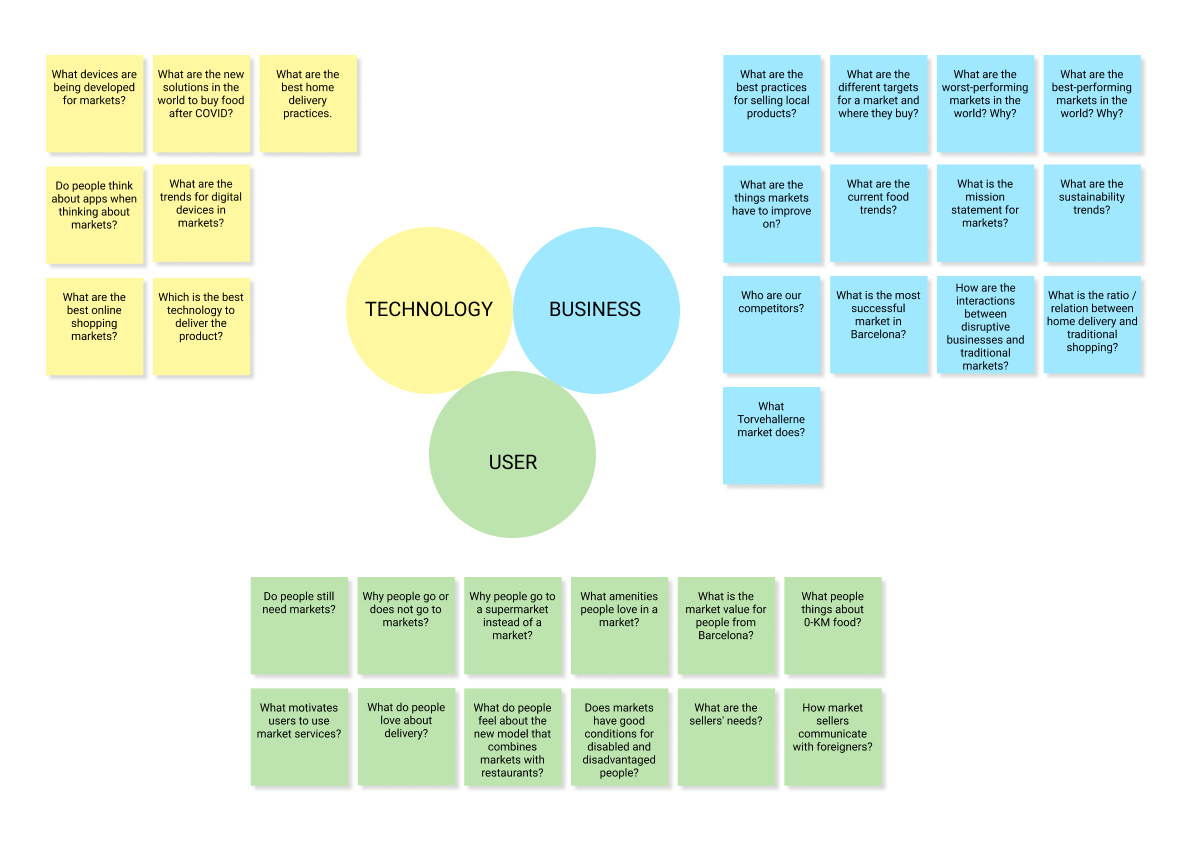
Market Research




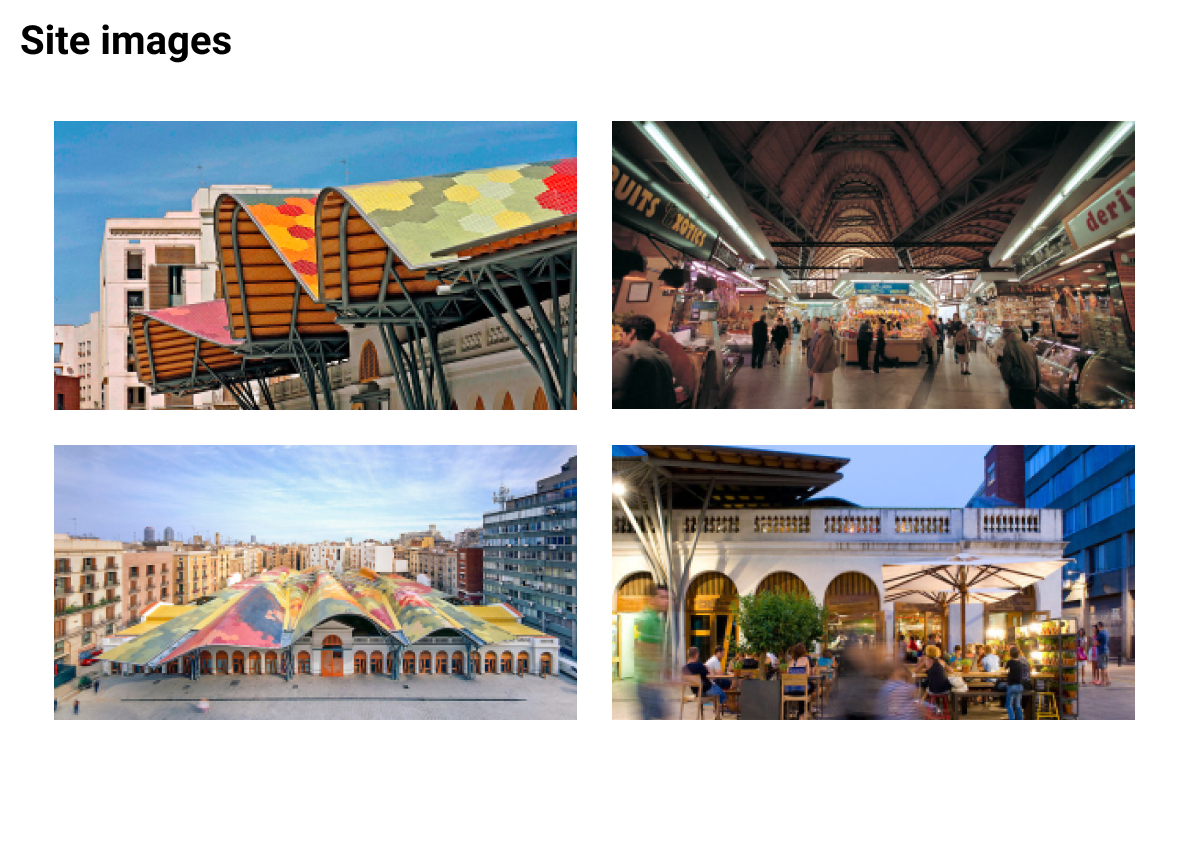

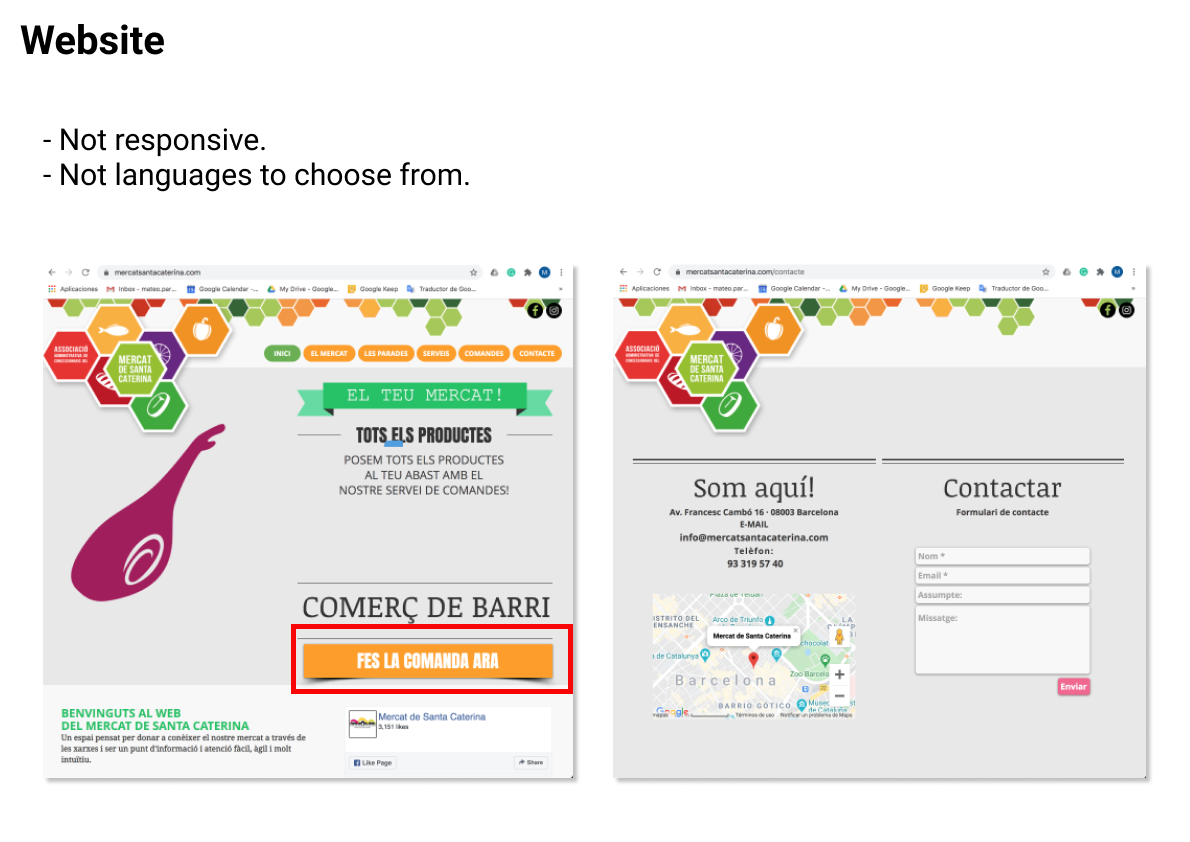
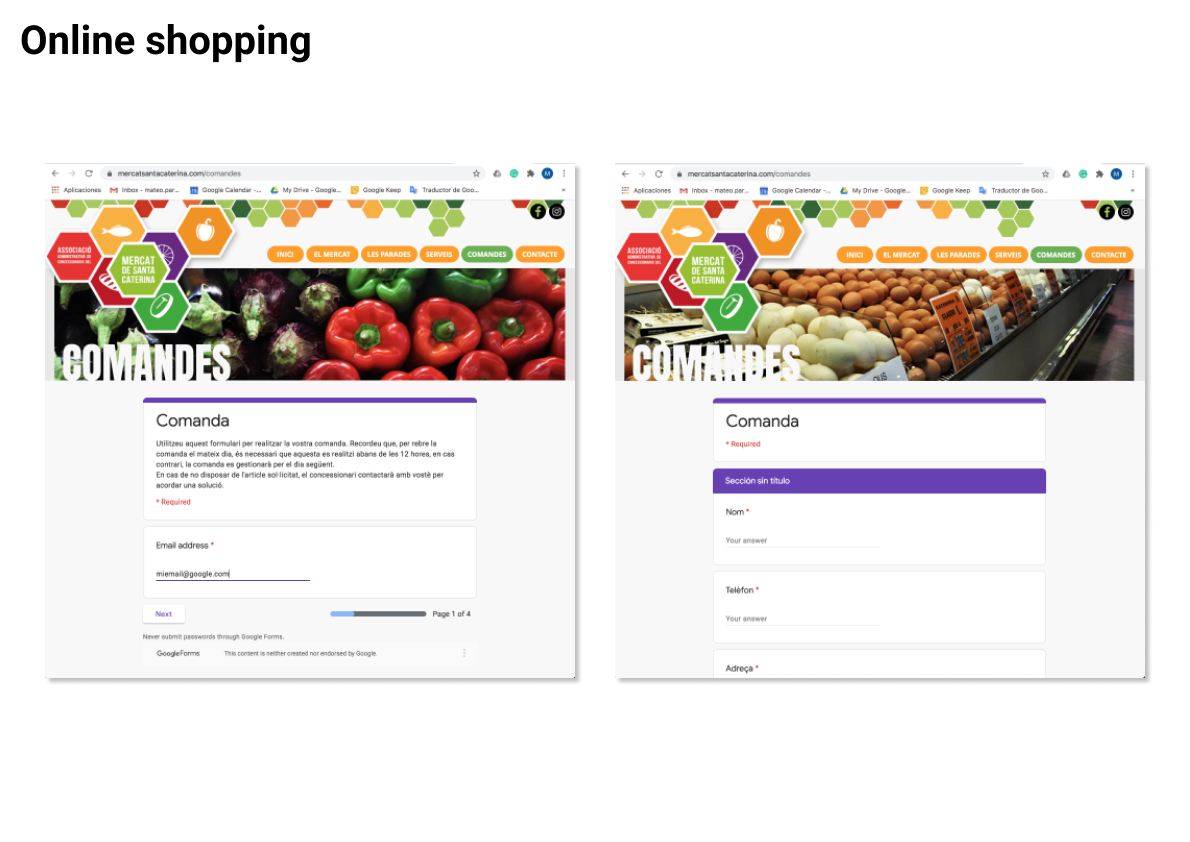
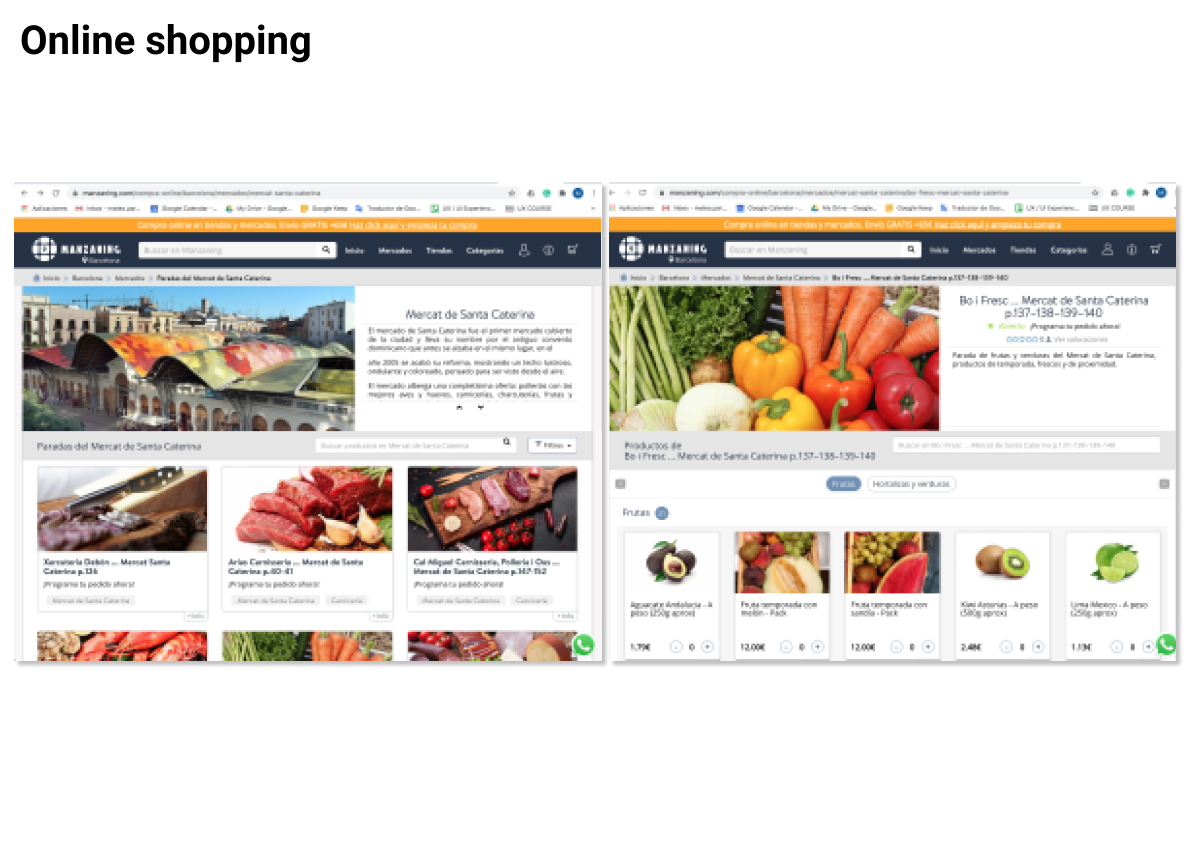


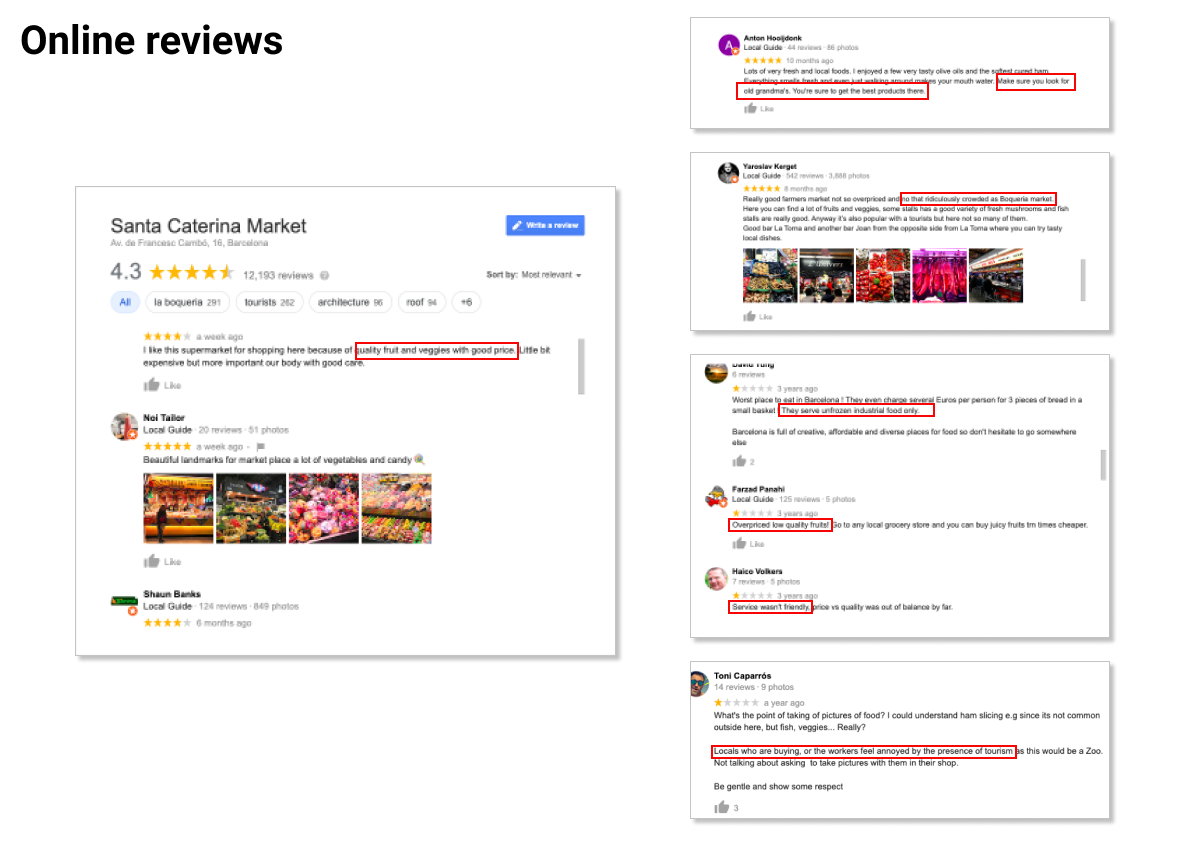
The Food Market Industry

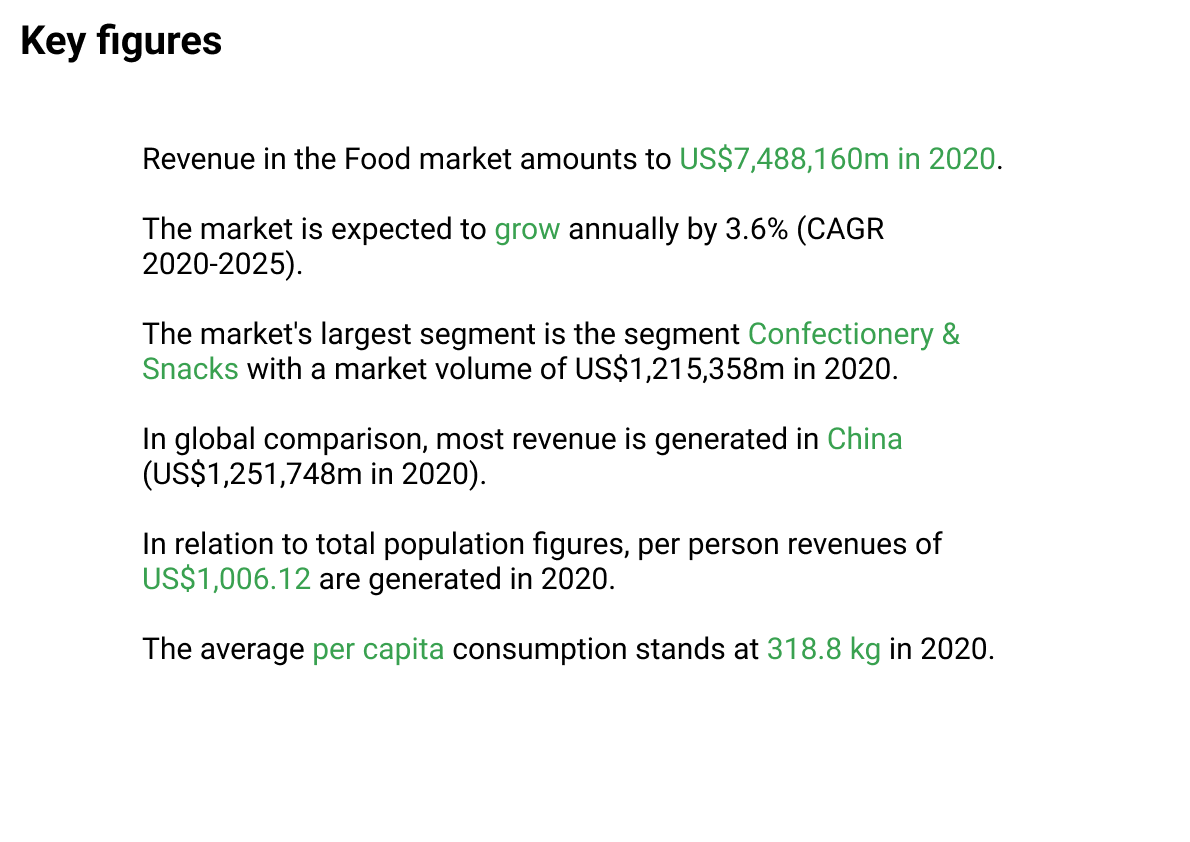
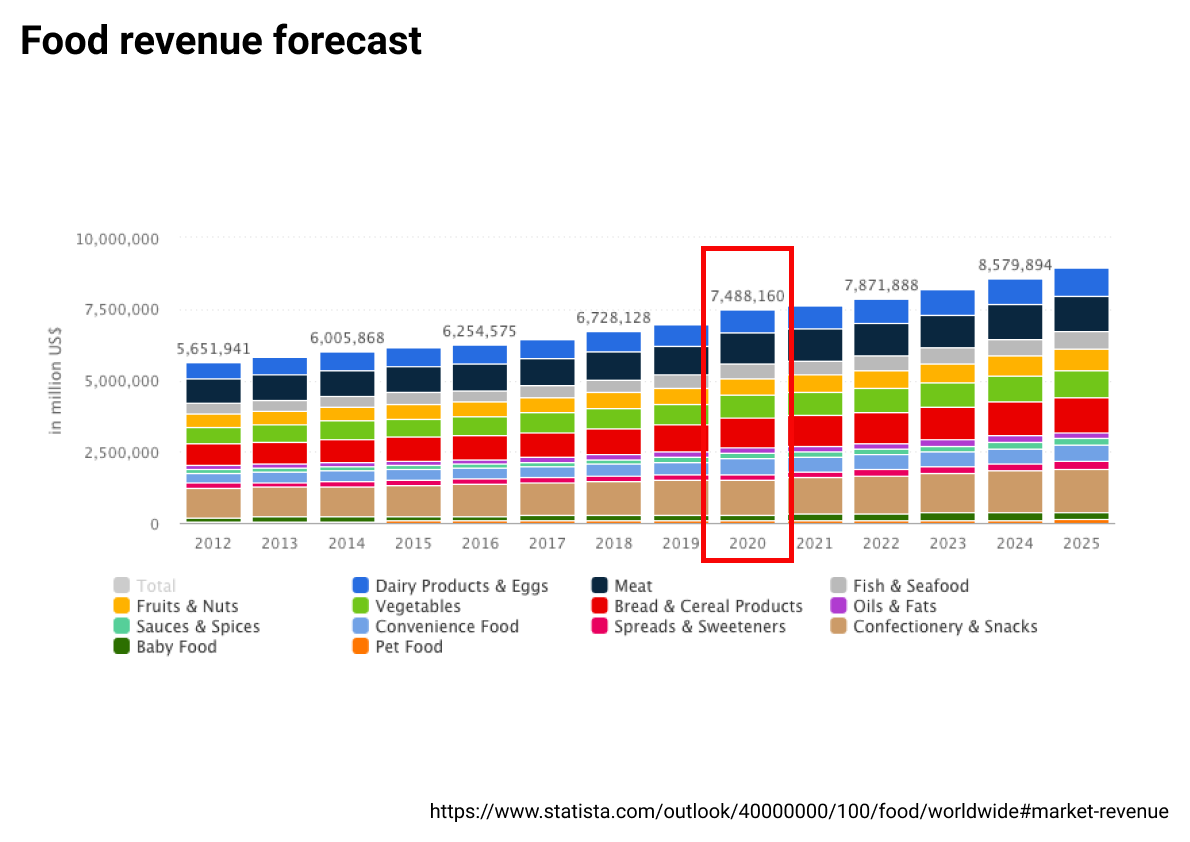
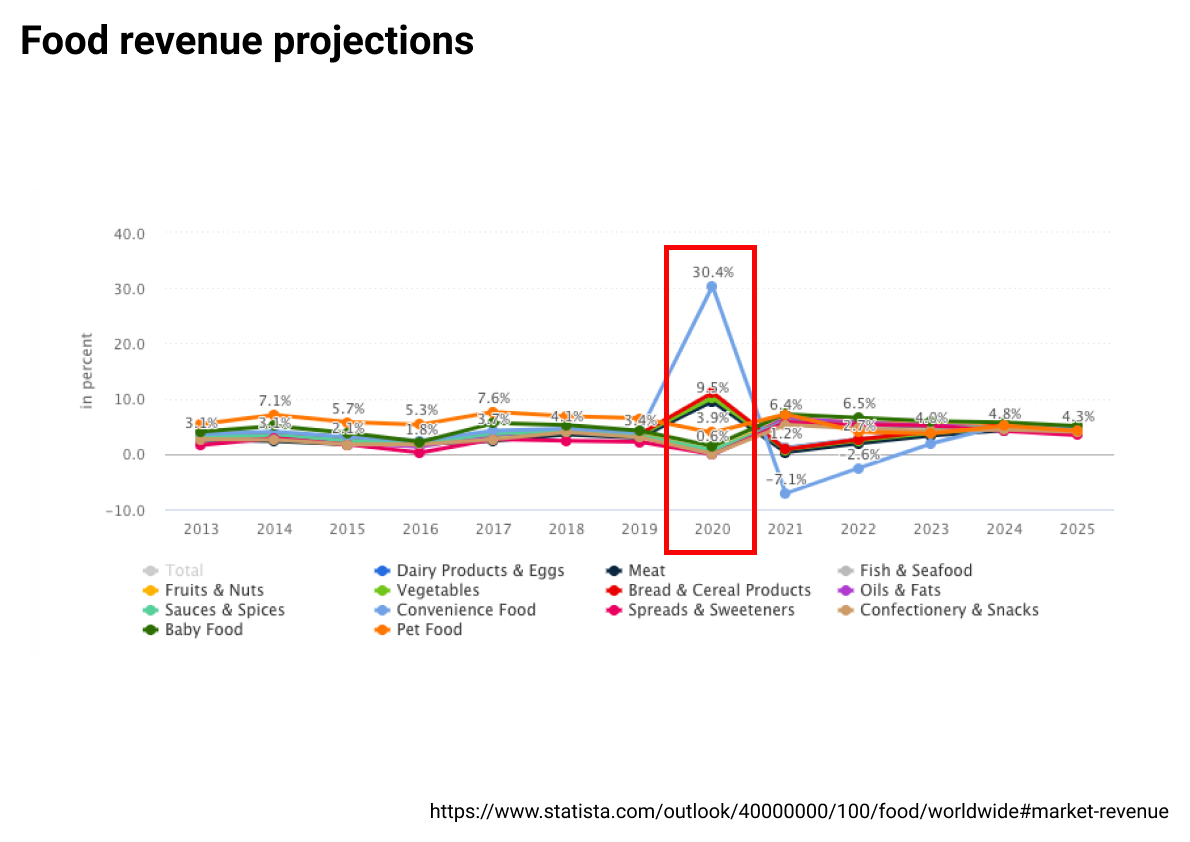
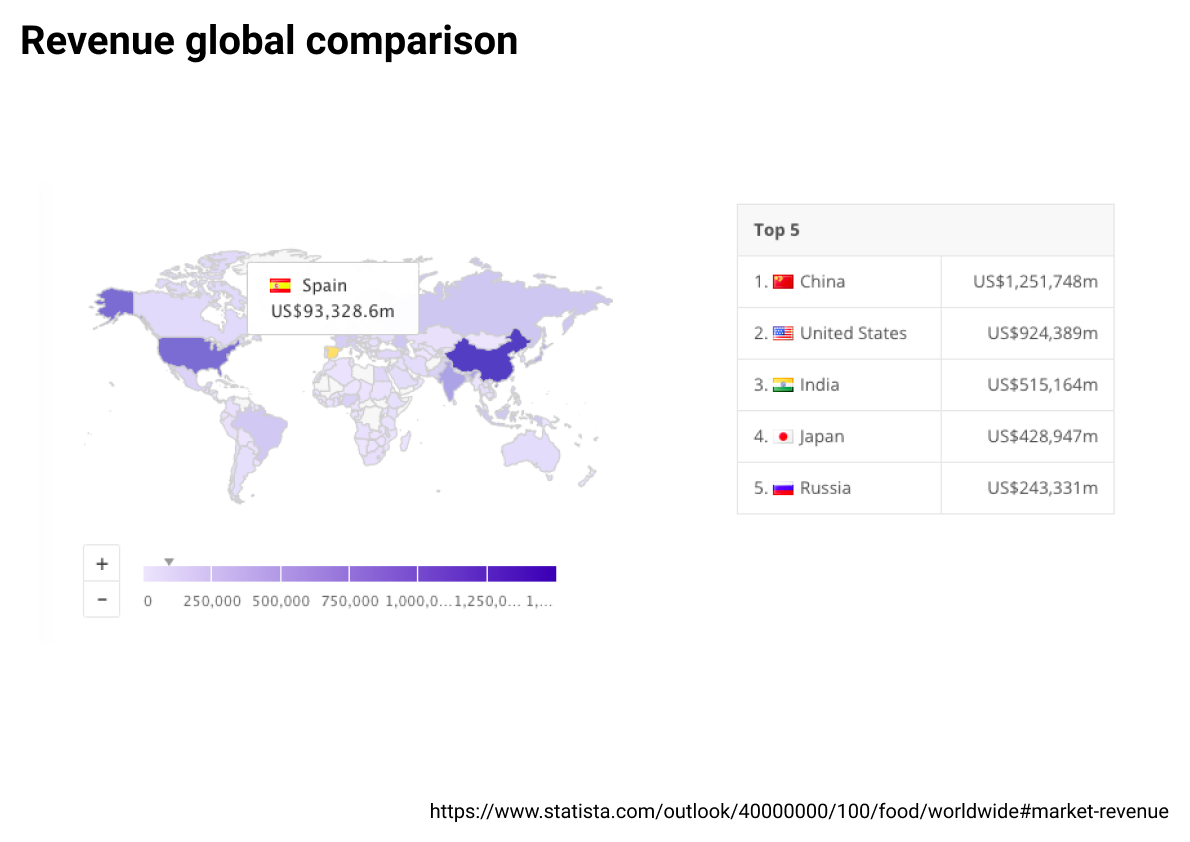

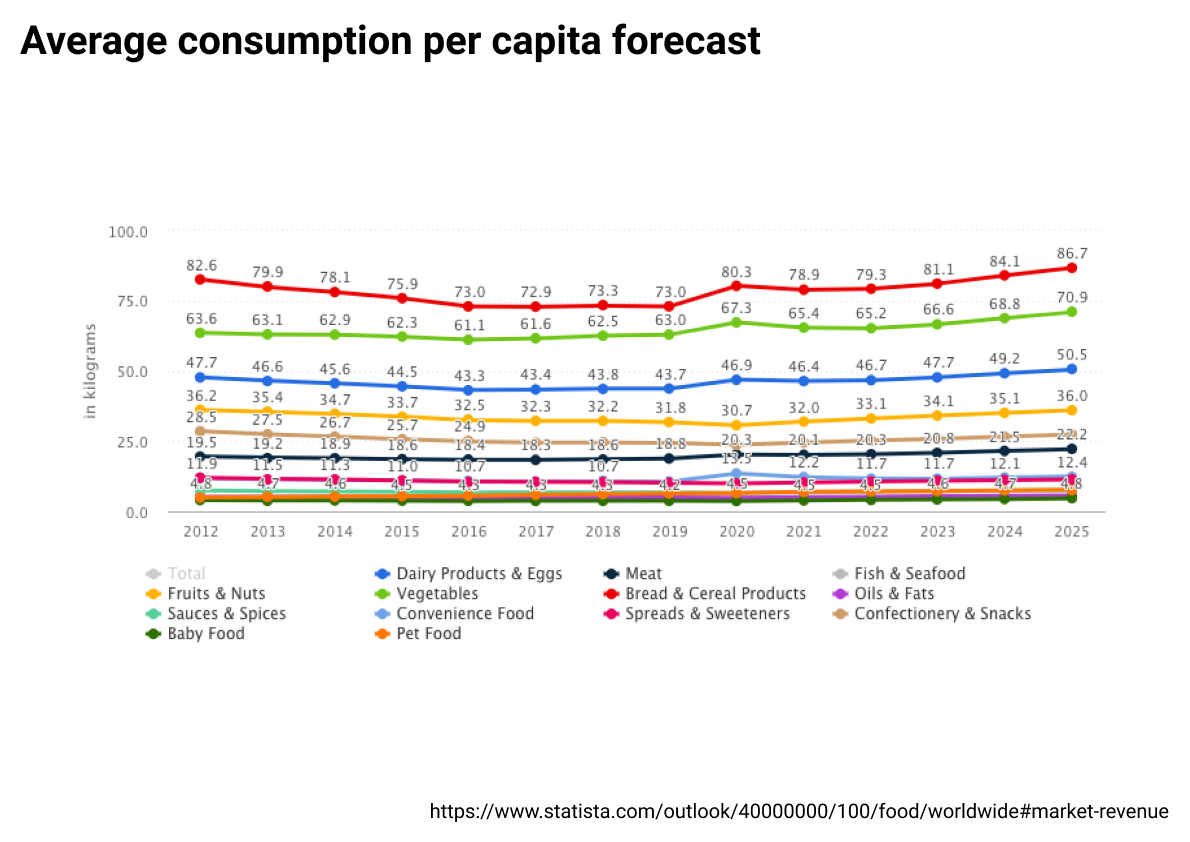
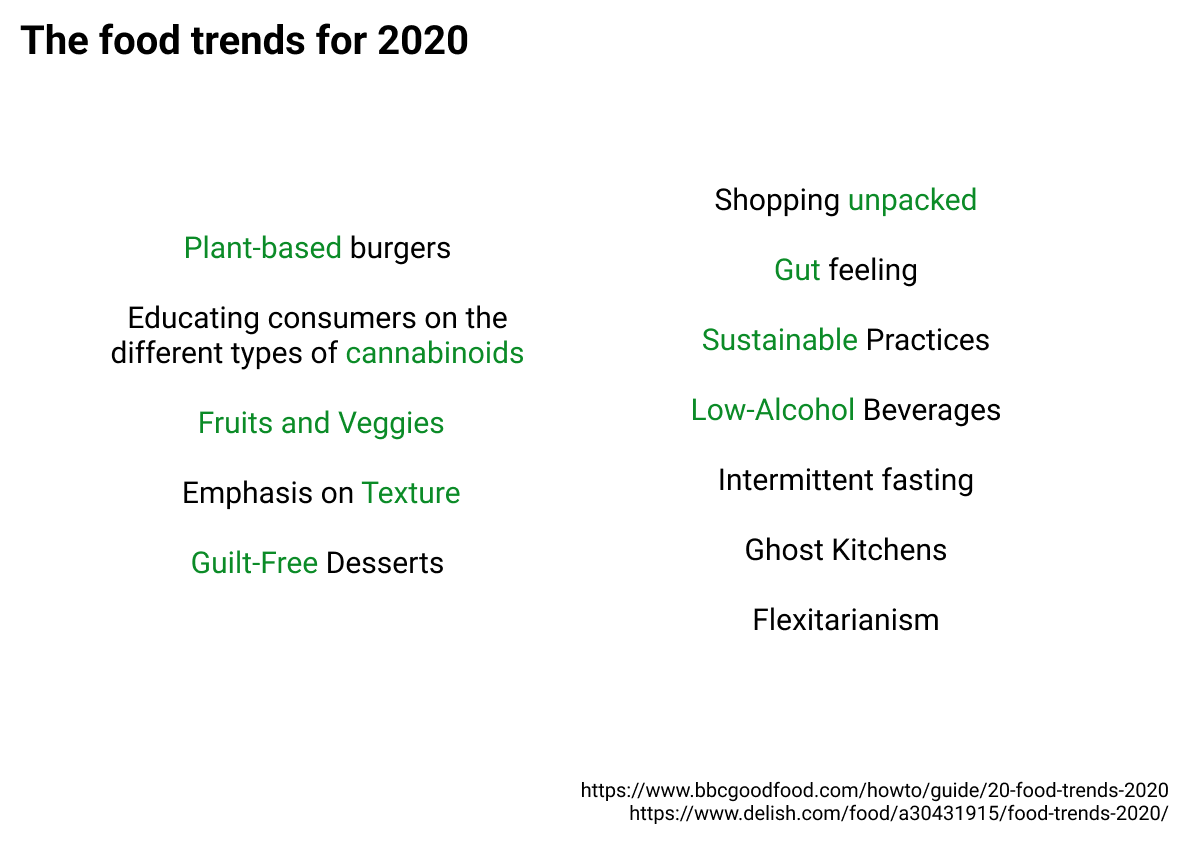

Competitors and Benchmarking


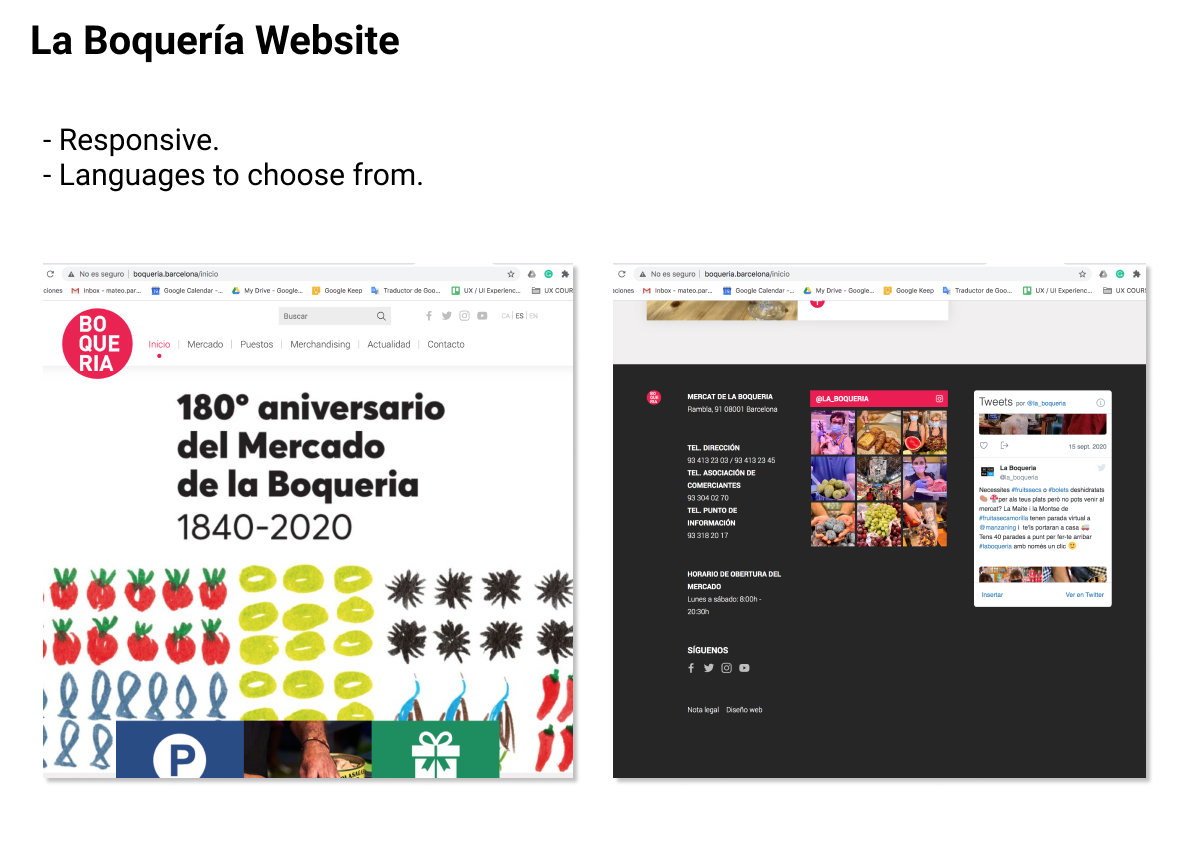
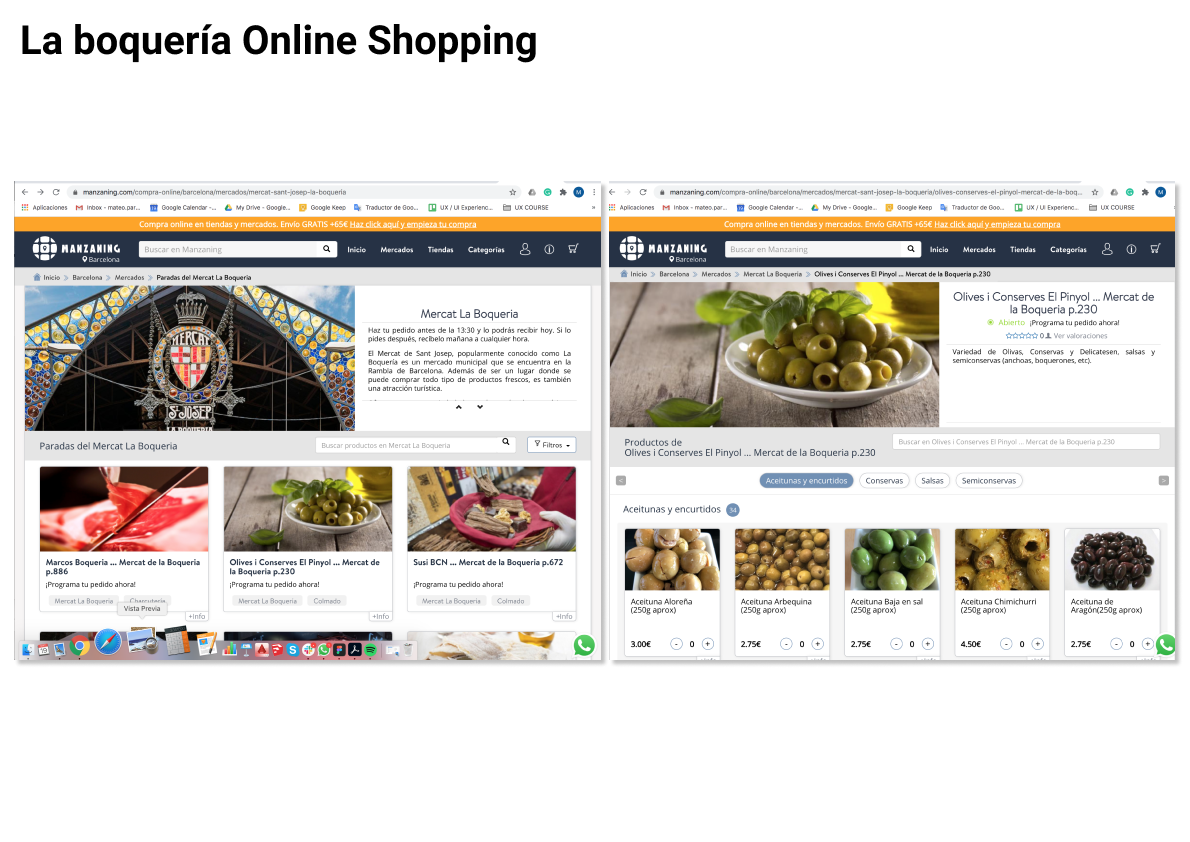
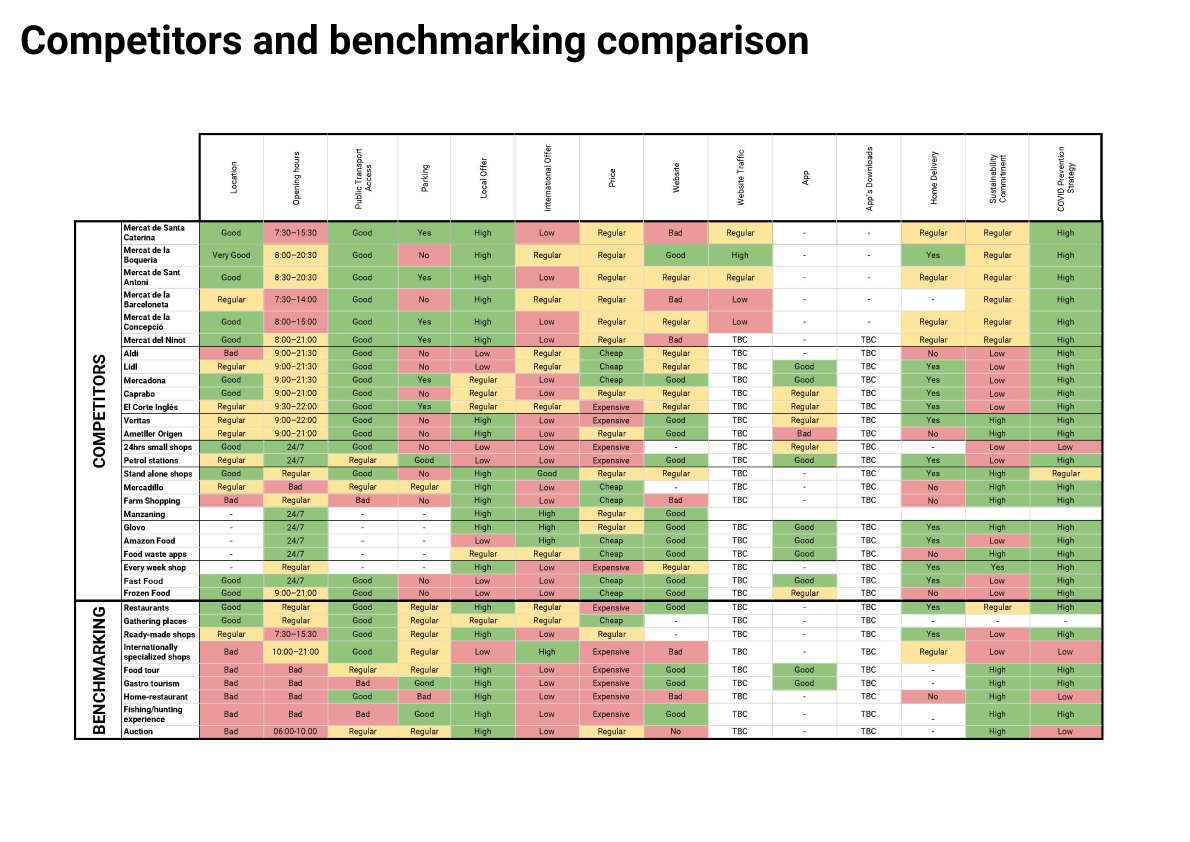

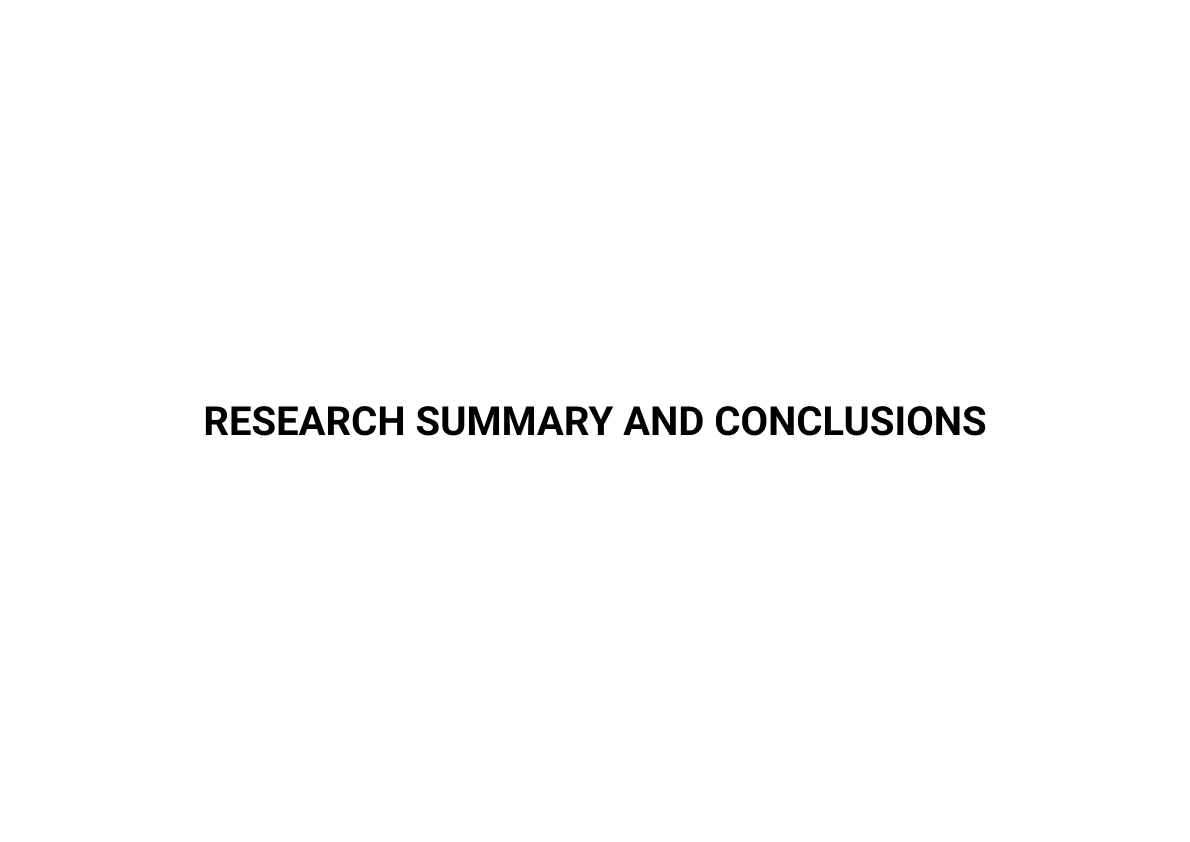
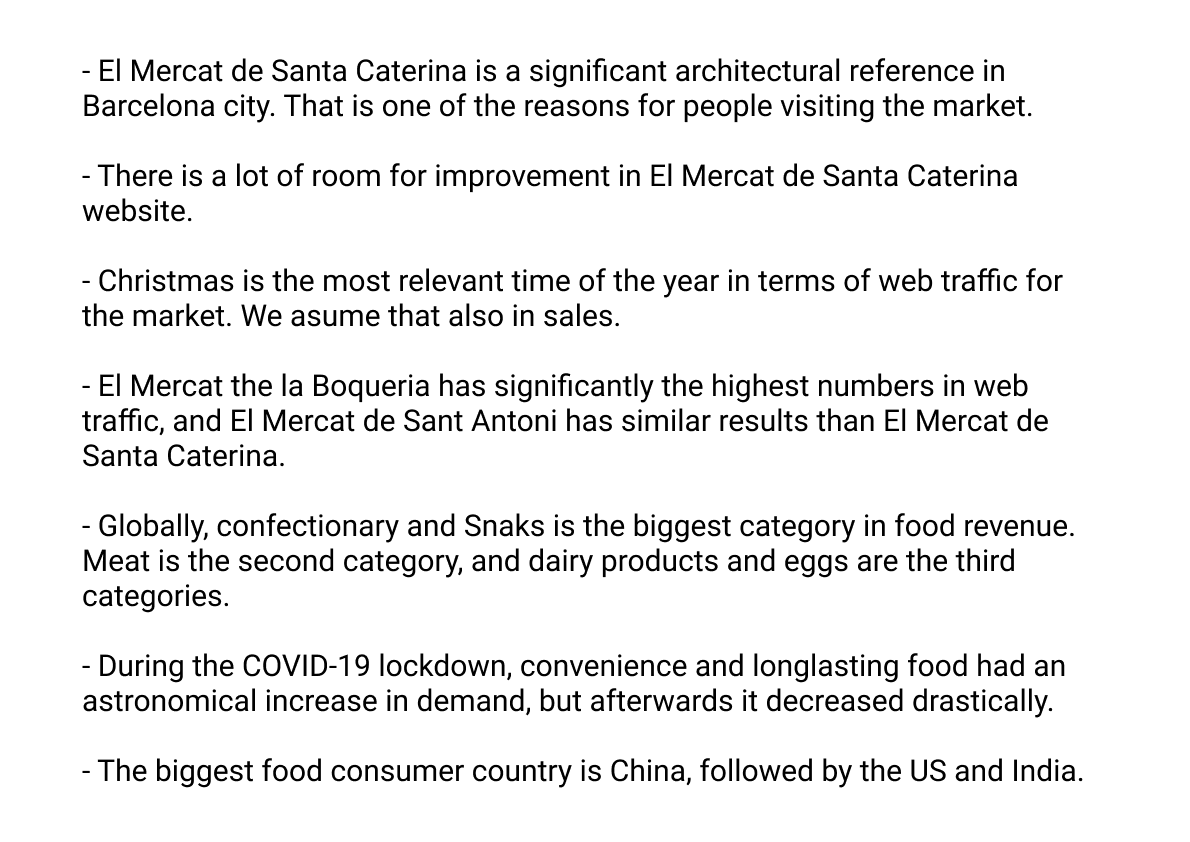
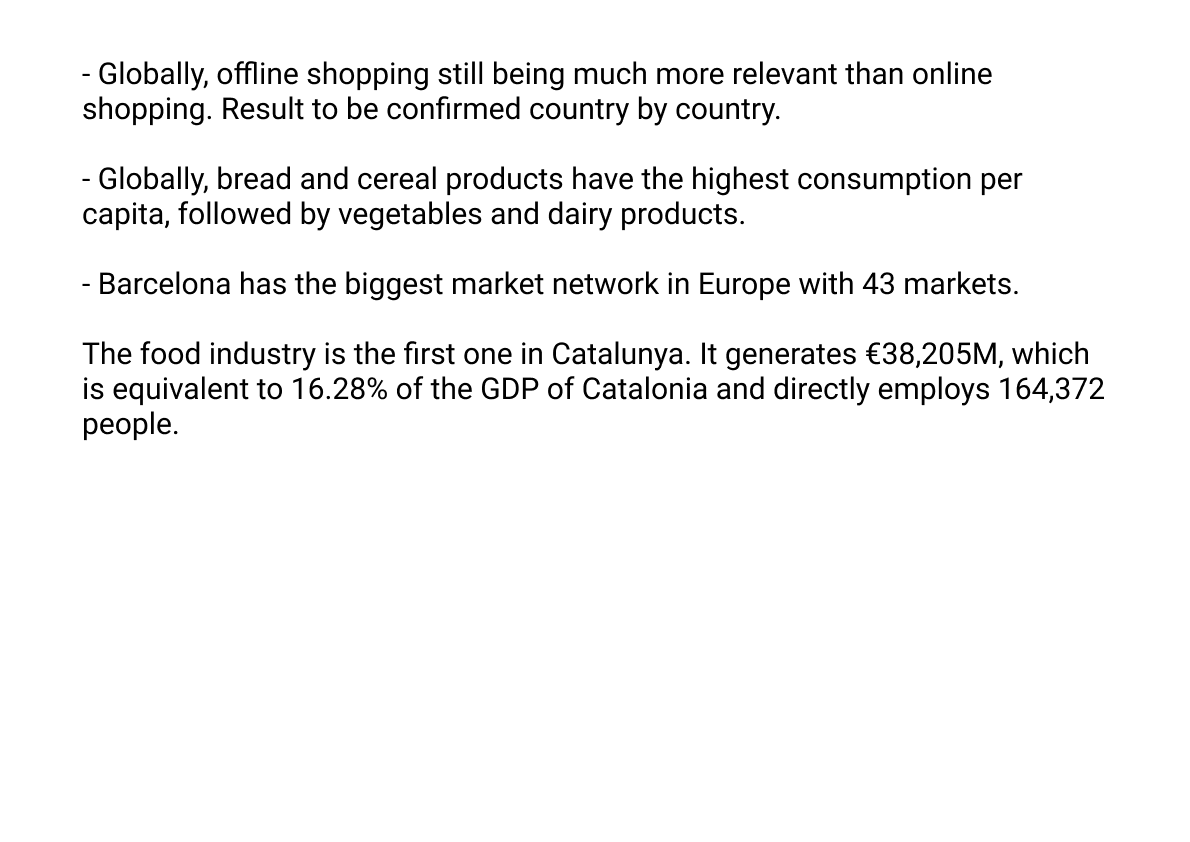
User Research

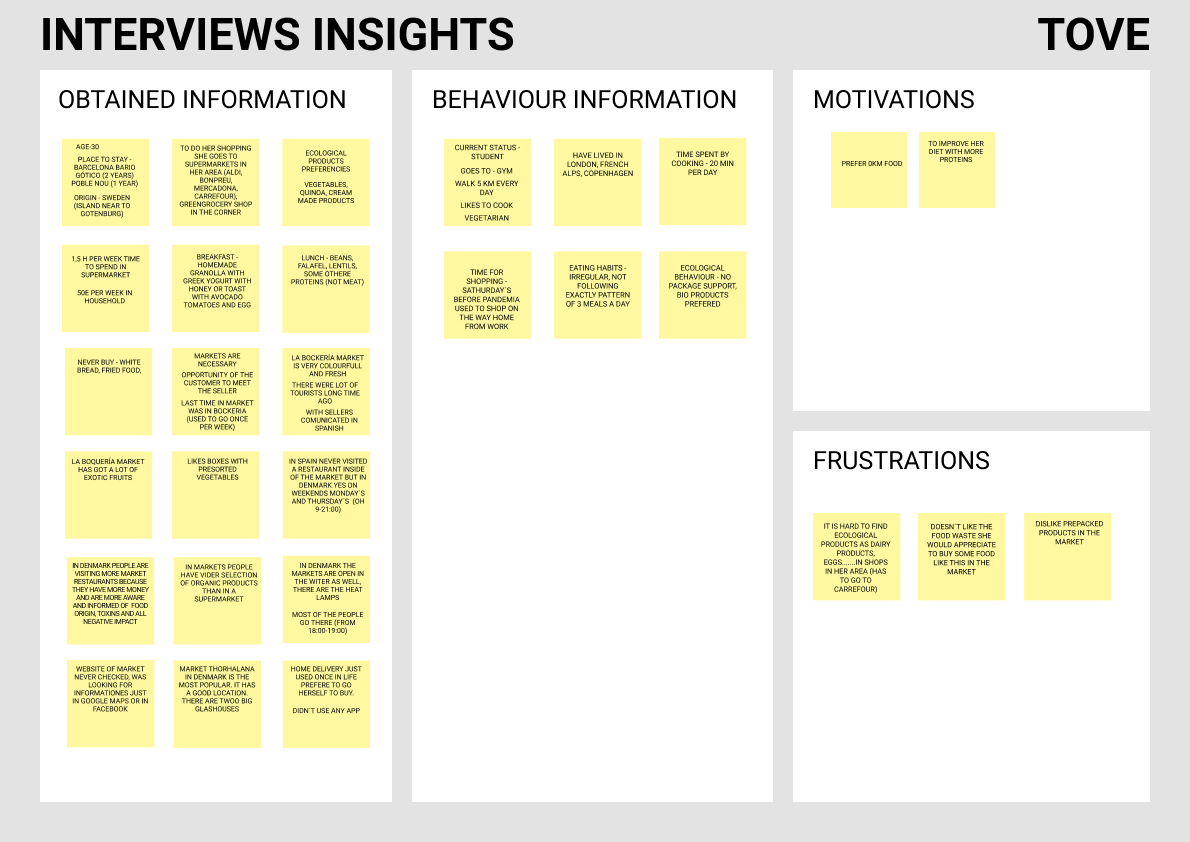


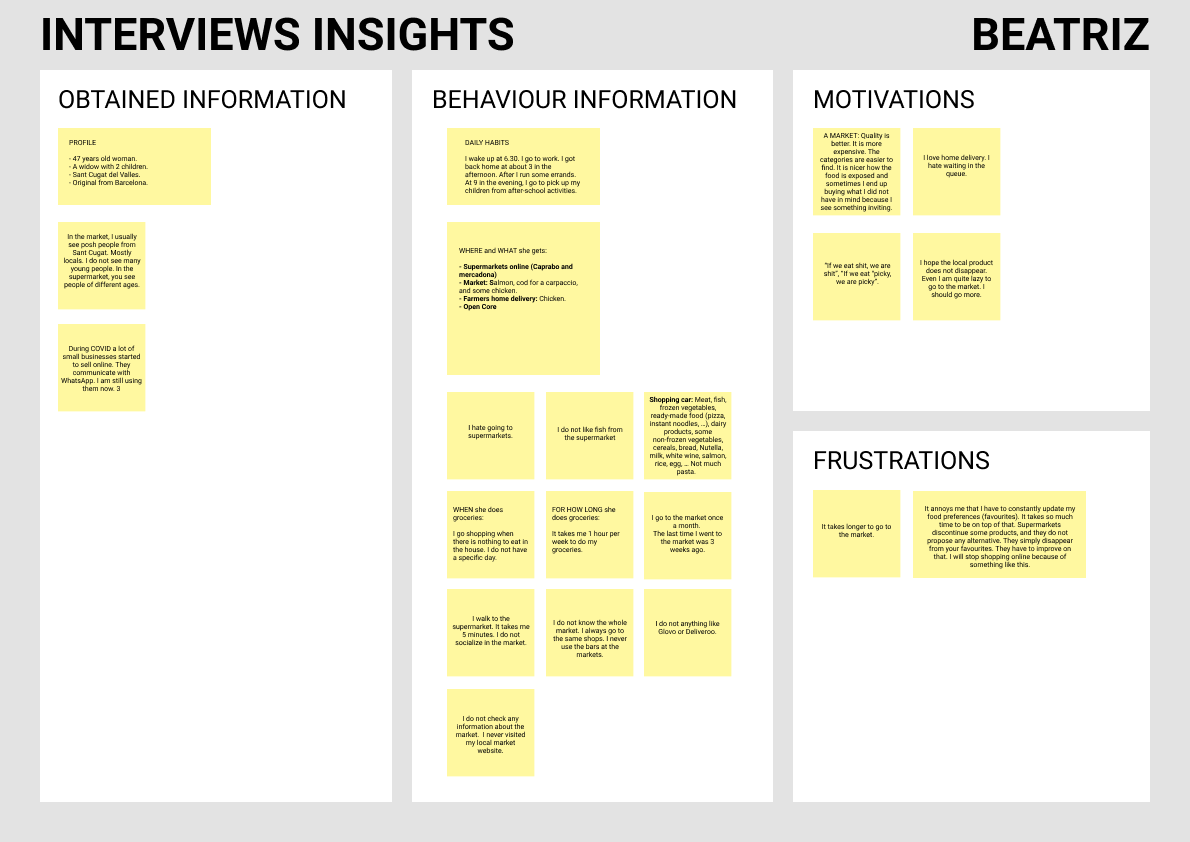
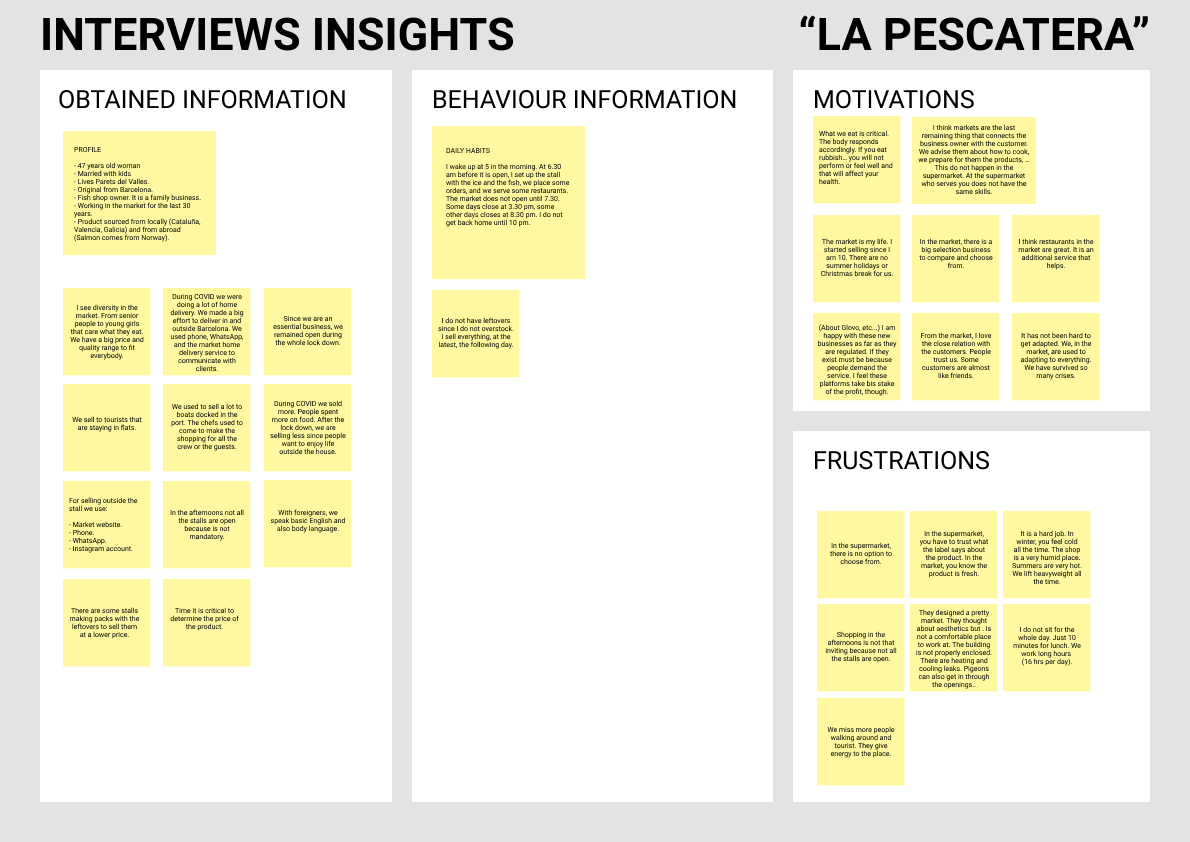
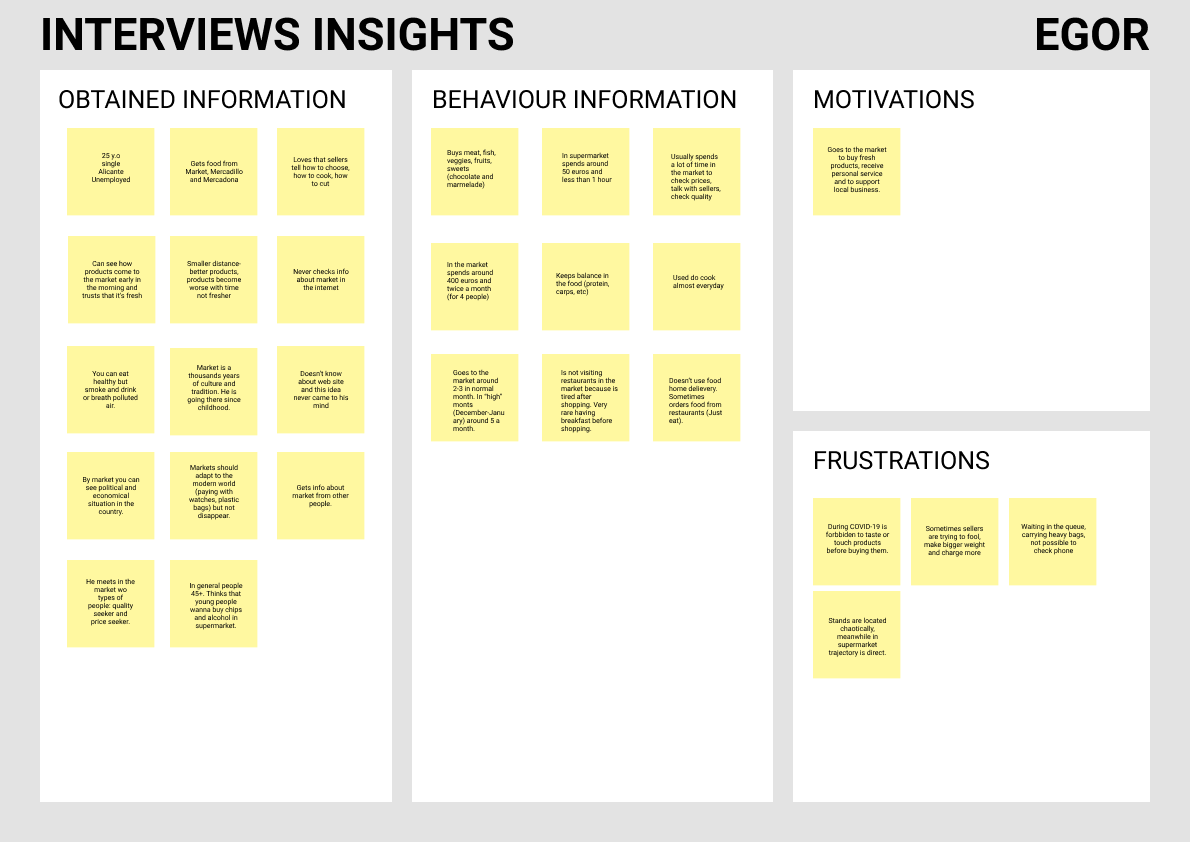
Survey Results and Conclusions
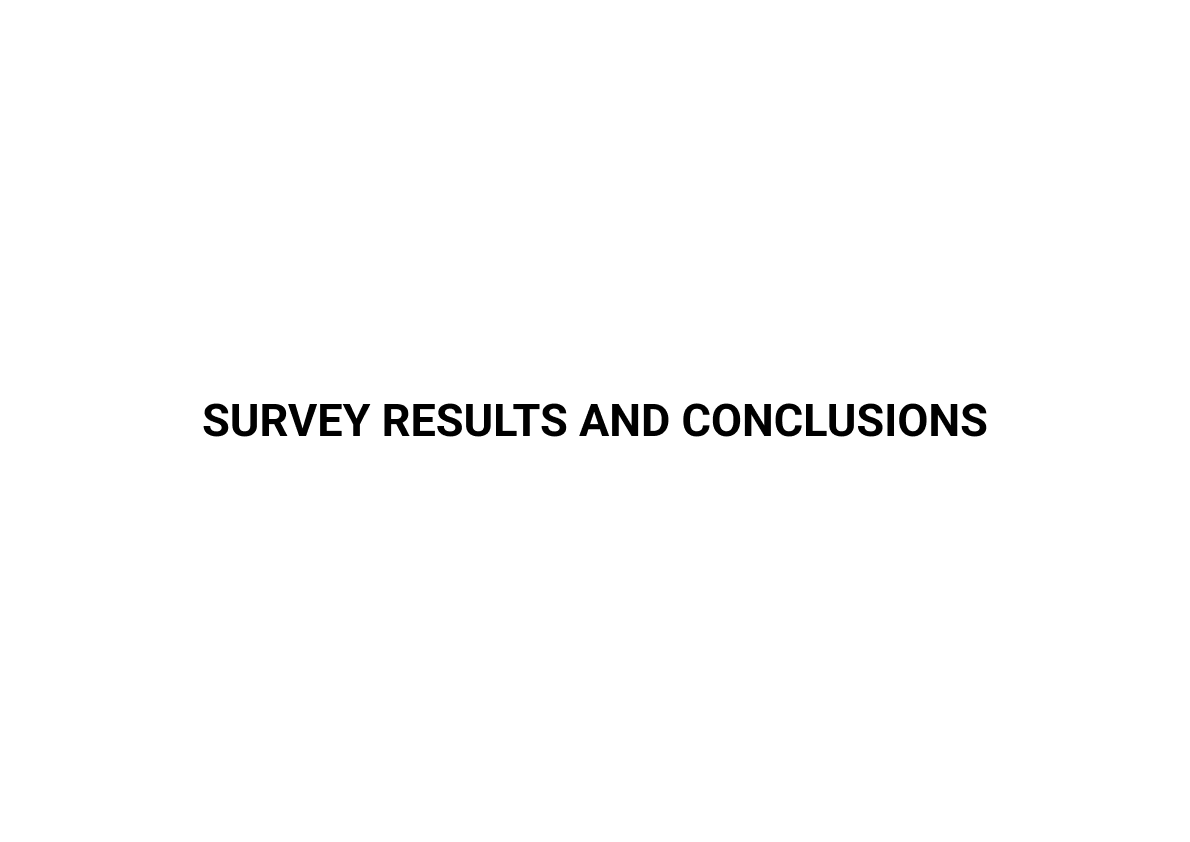
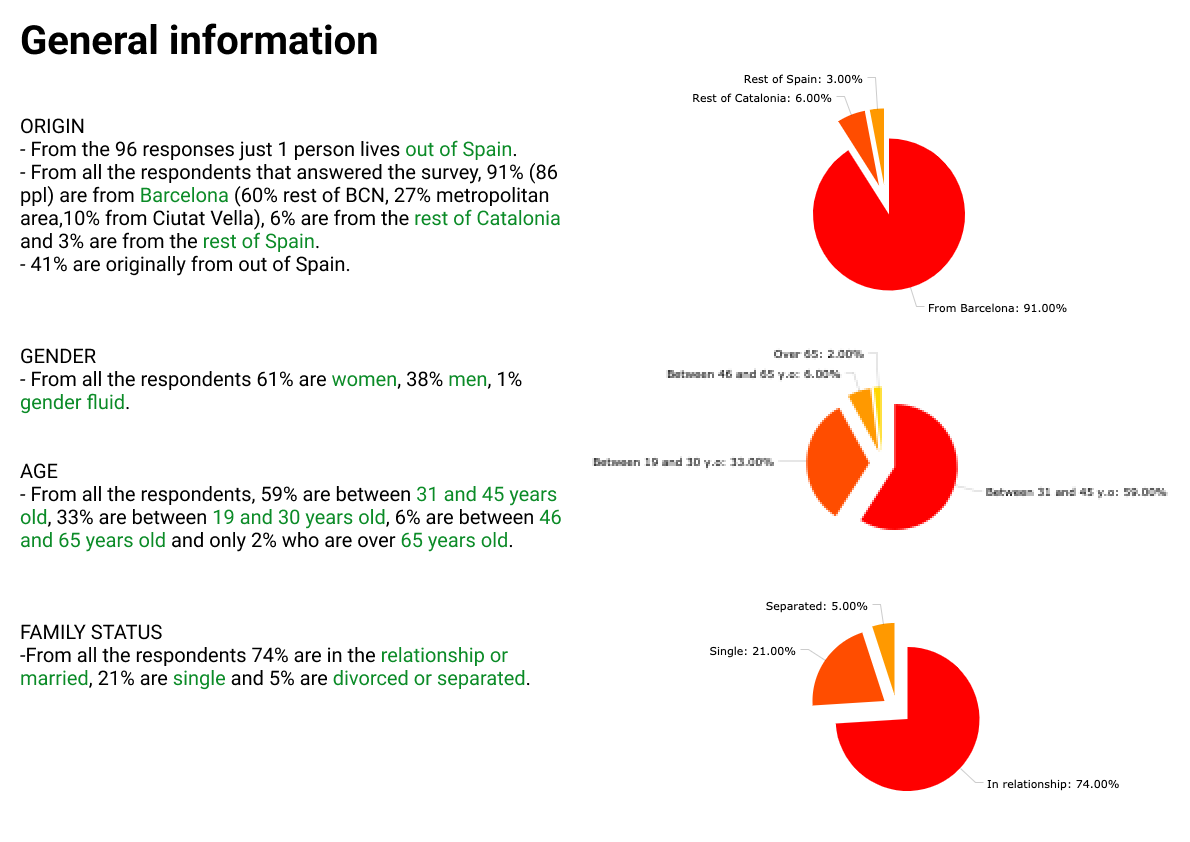
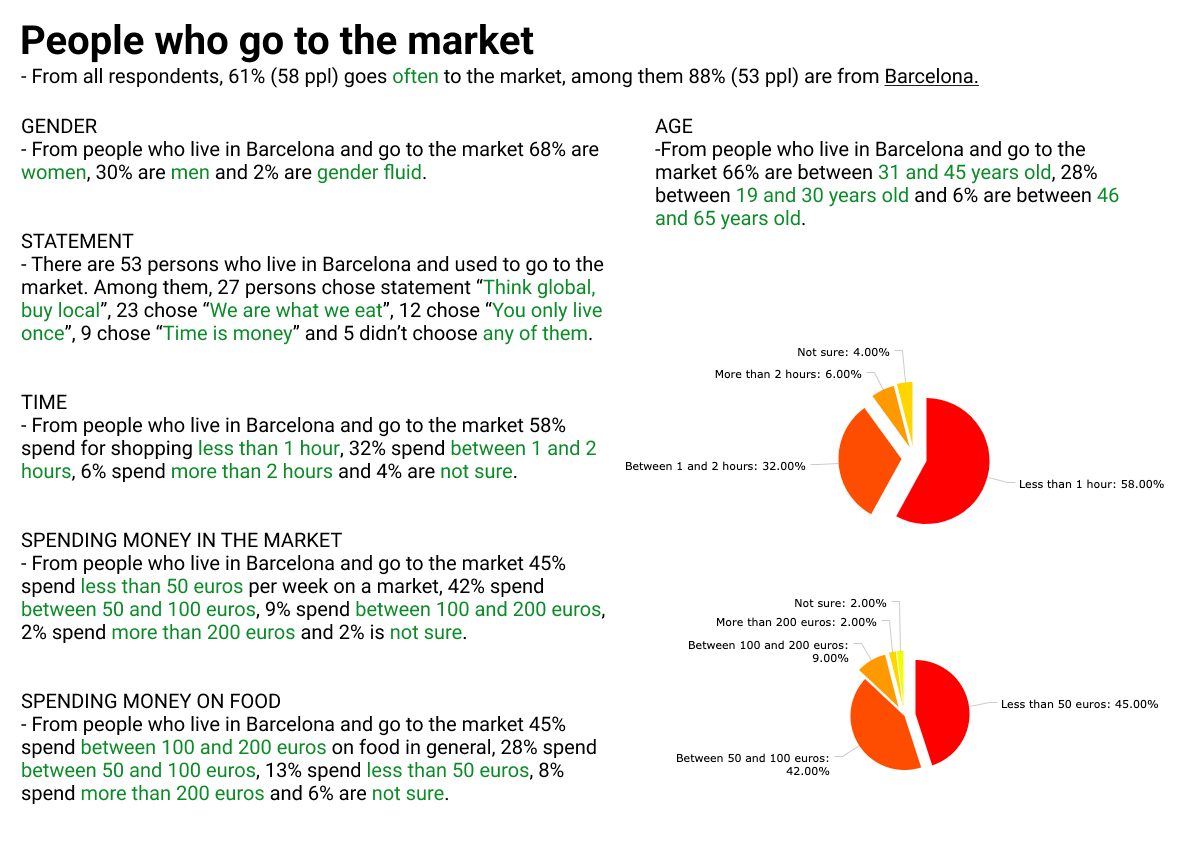
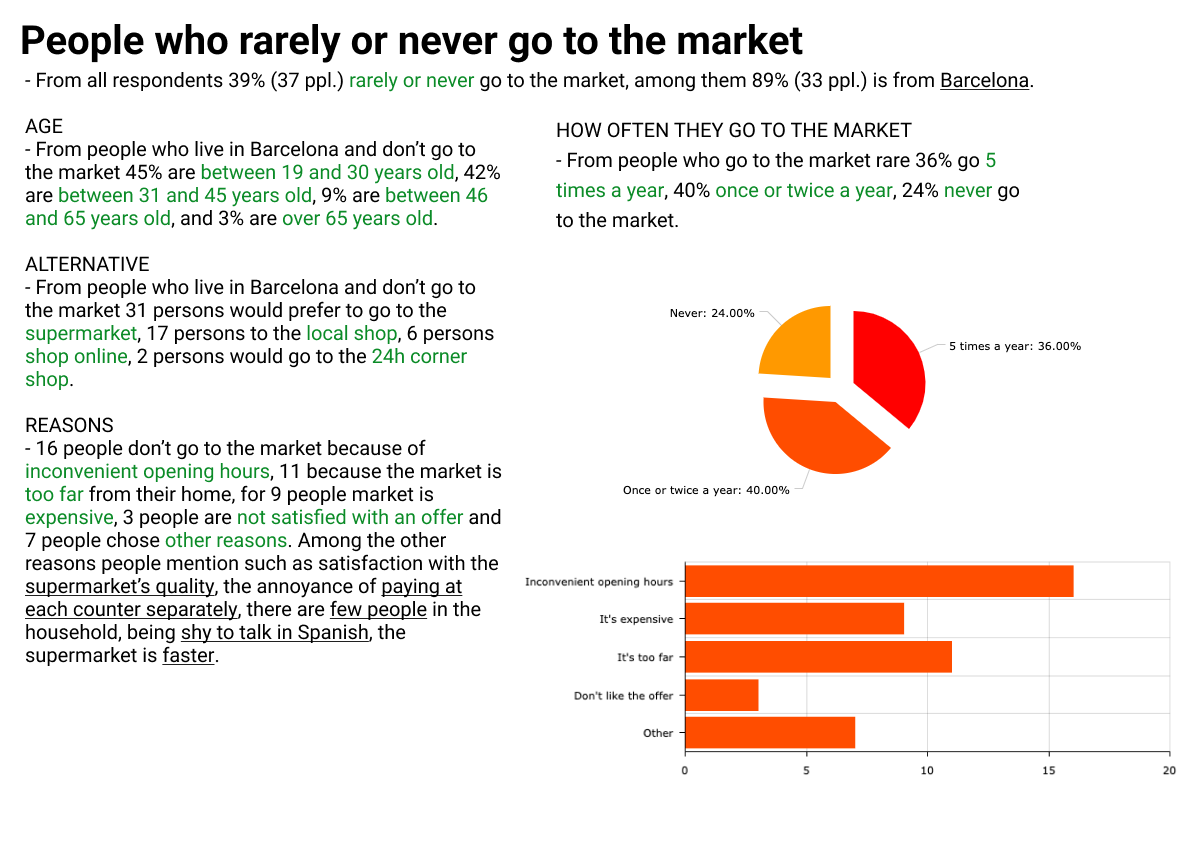

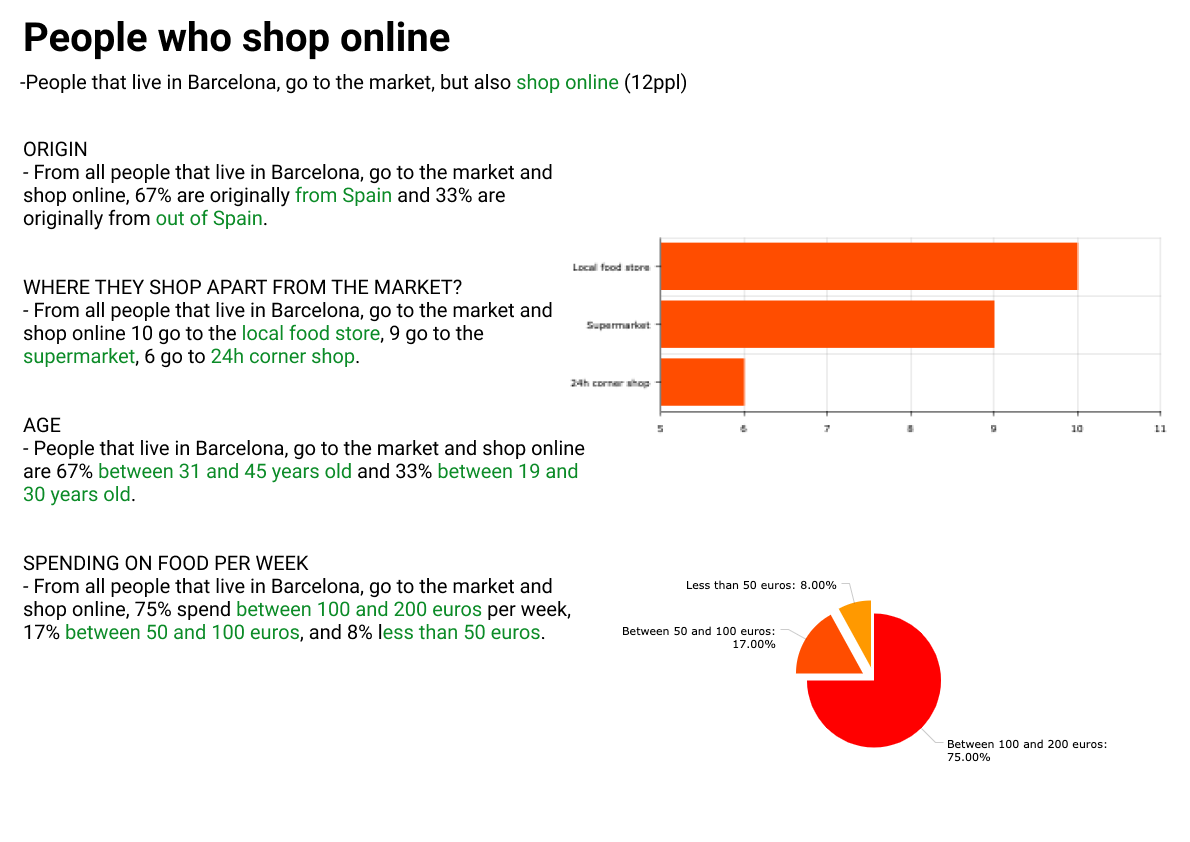
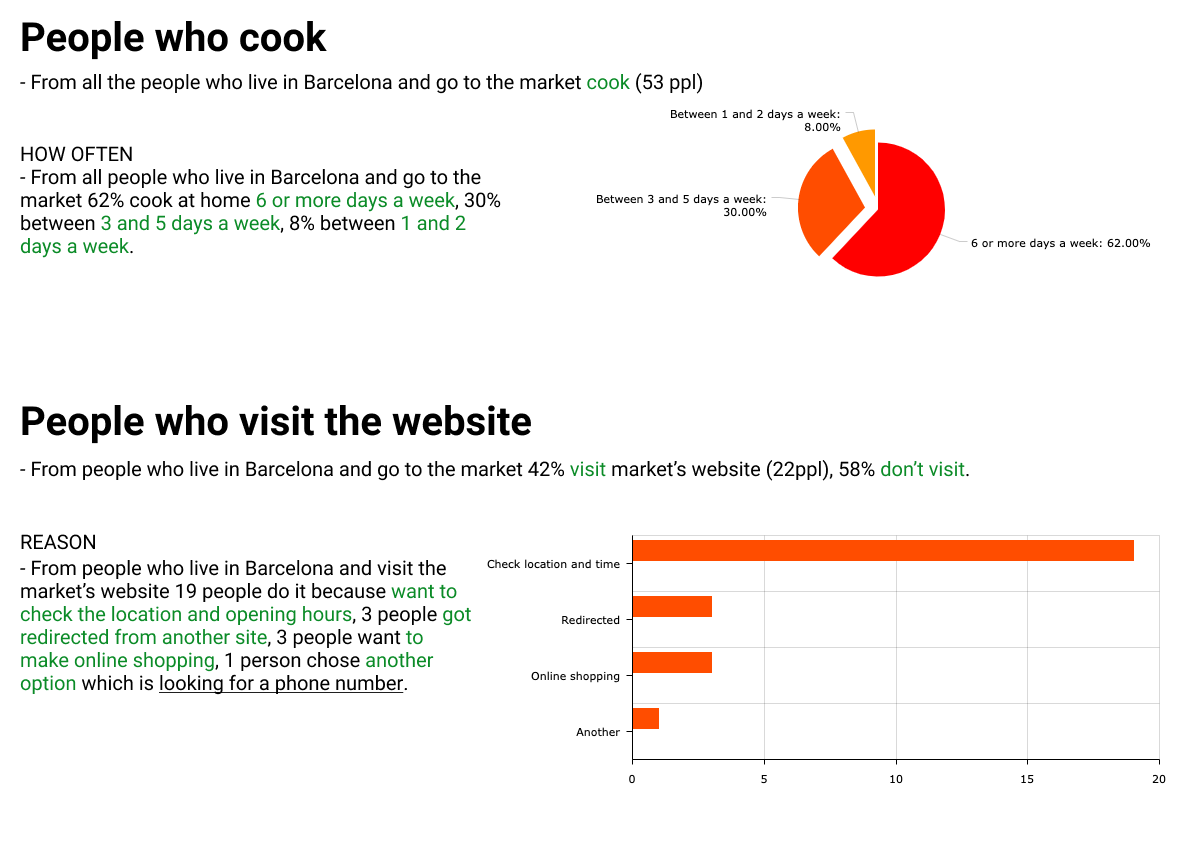
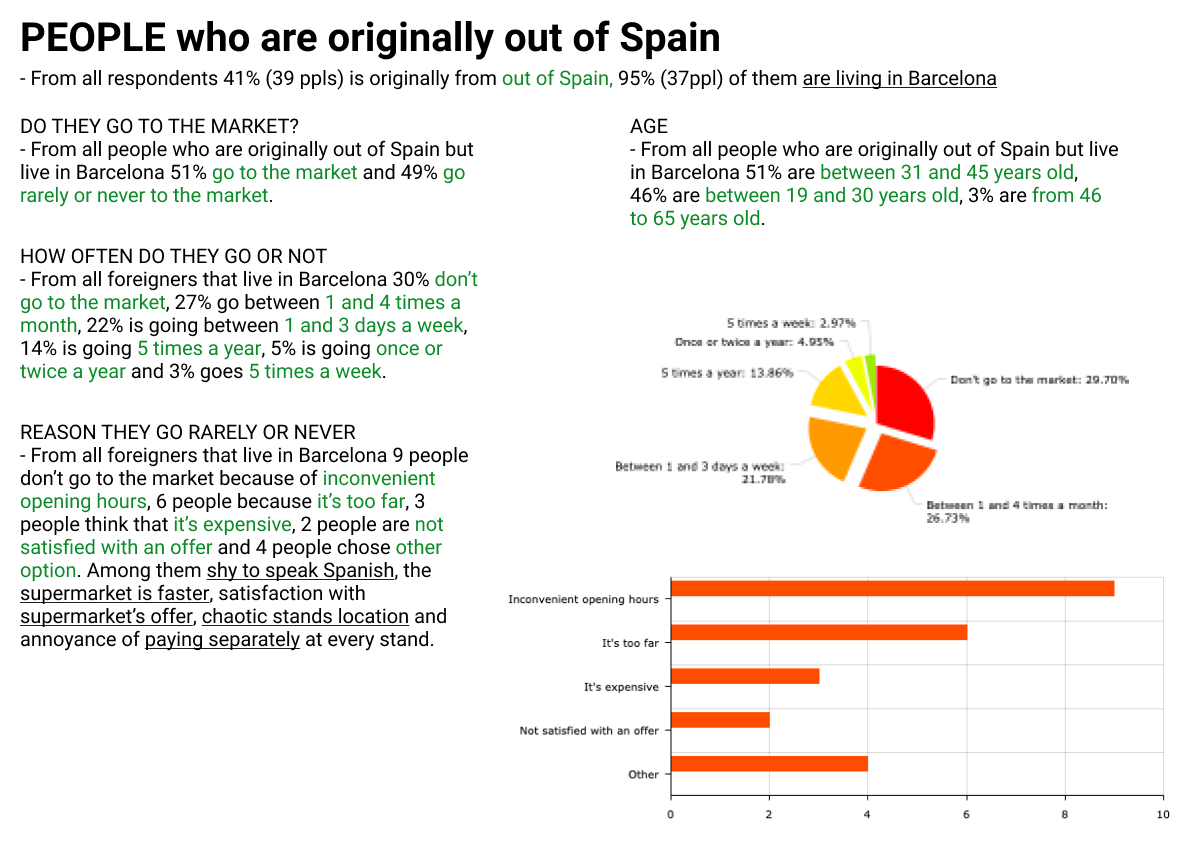
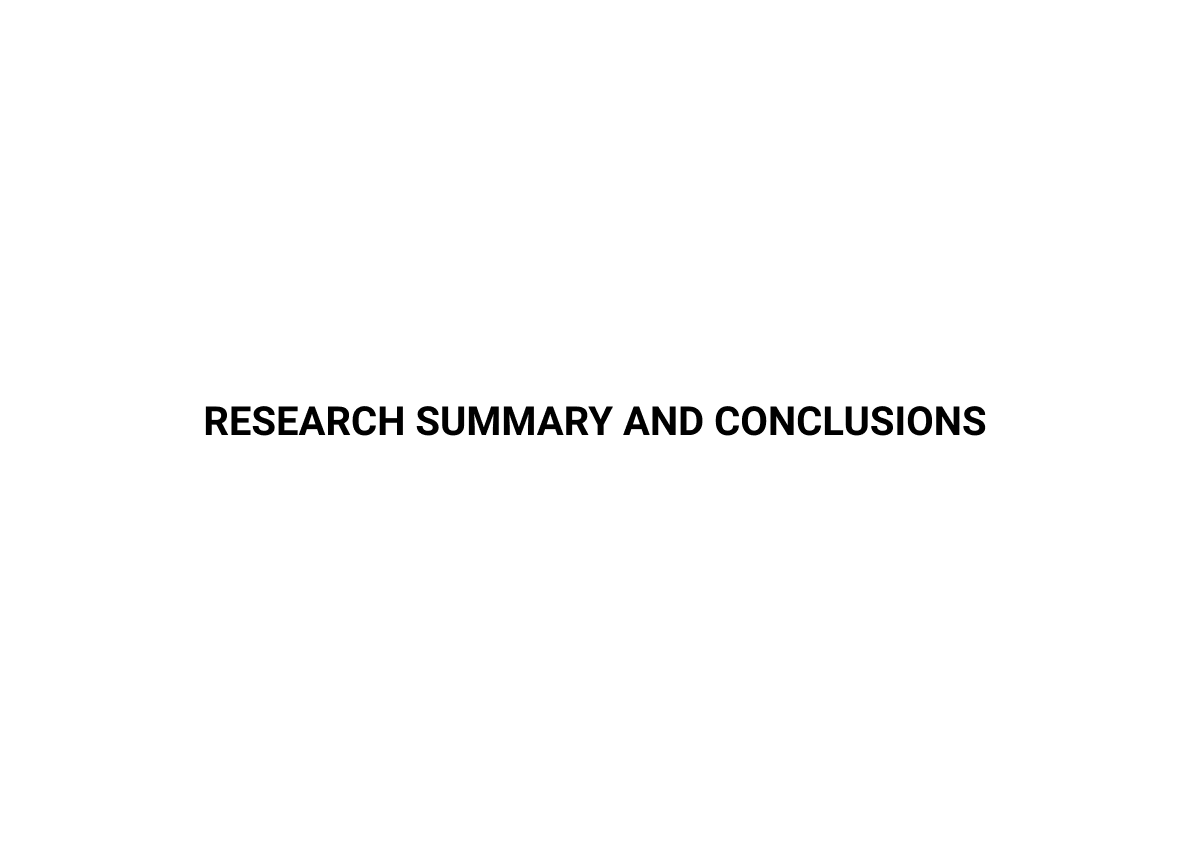

Personas
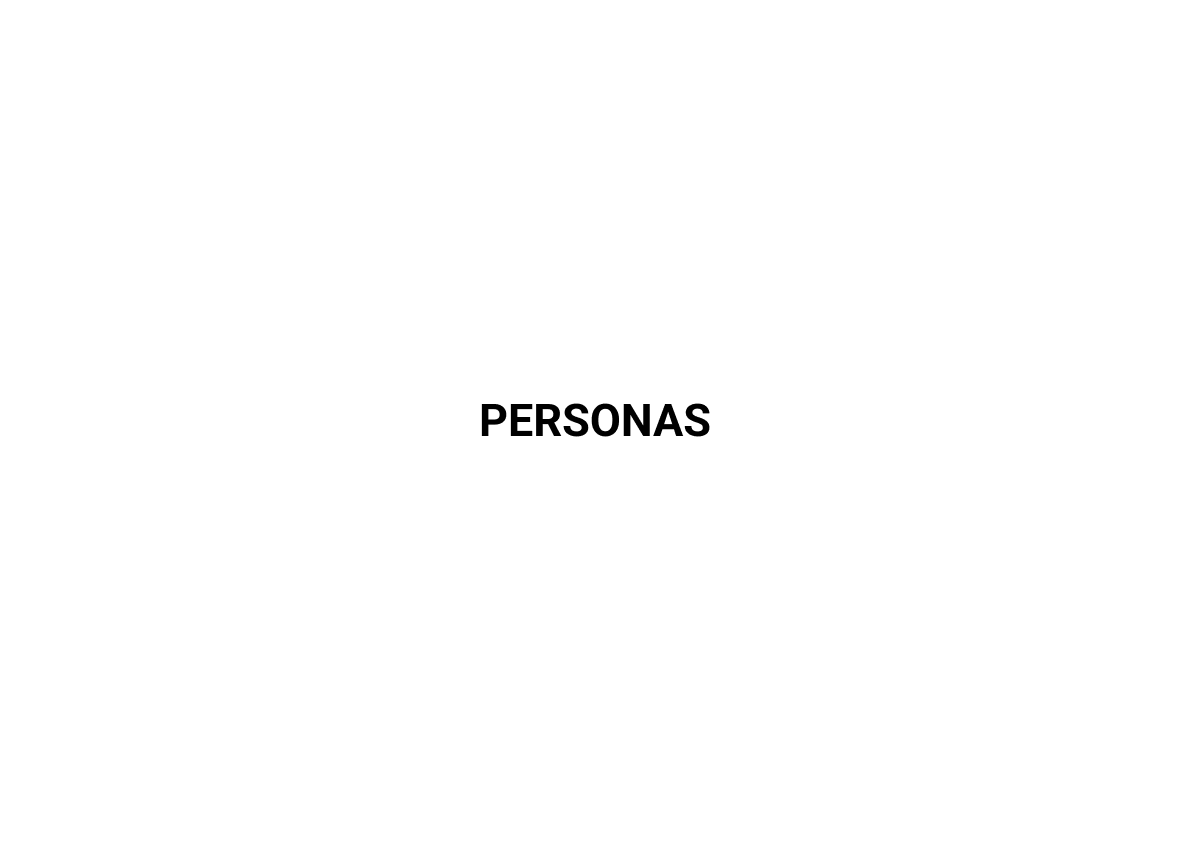

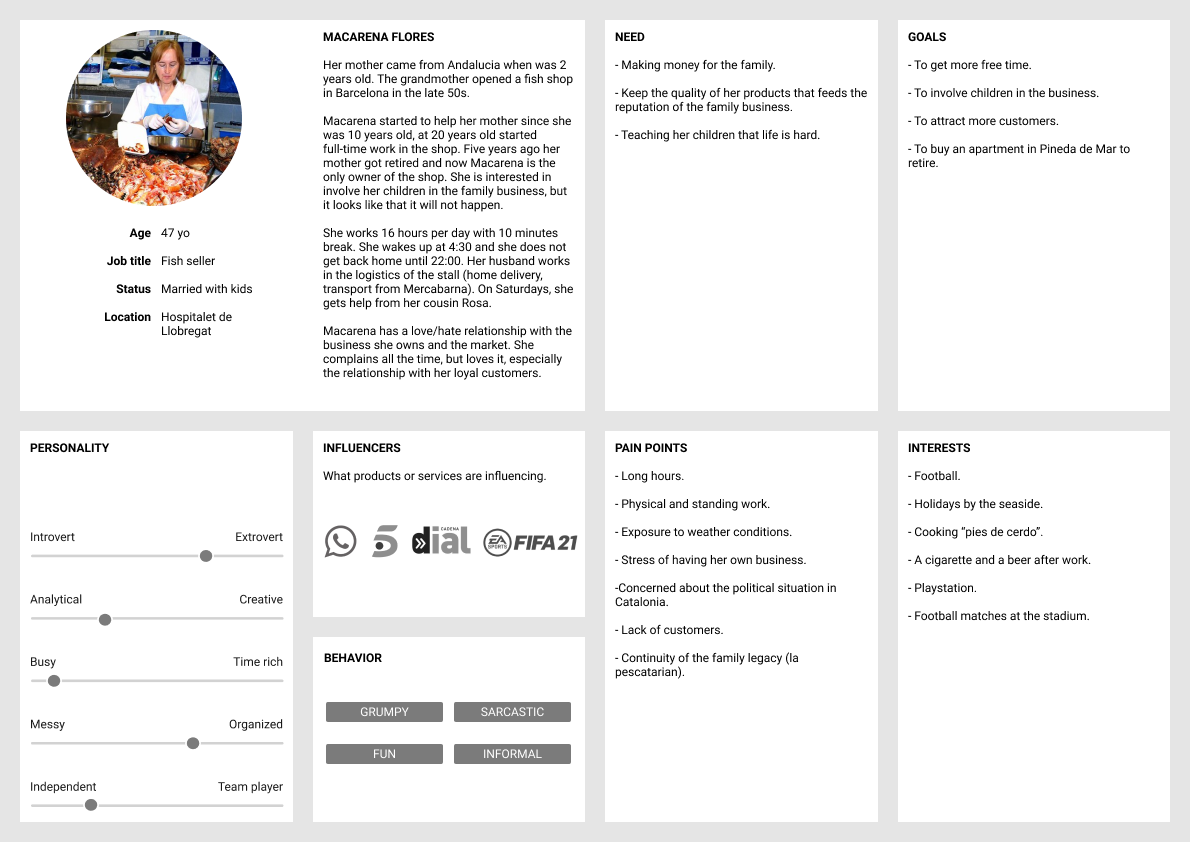
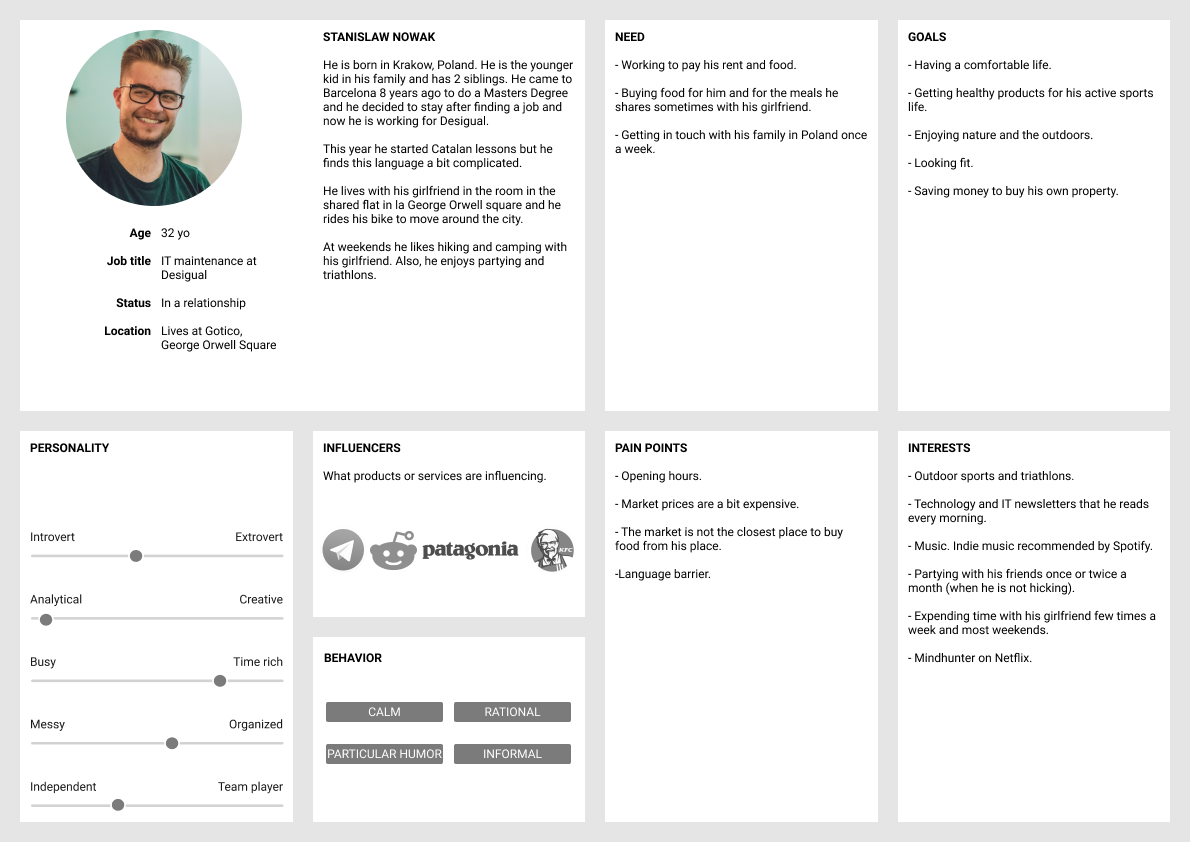
Empathy Maps
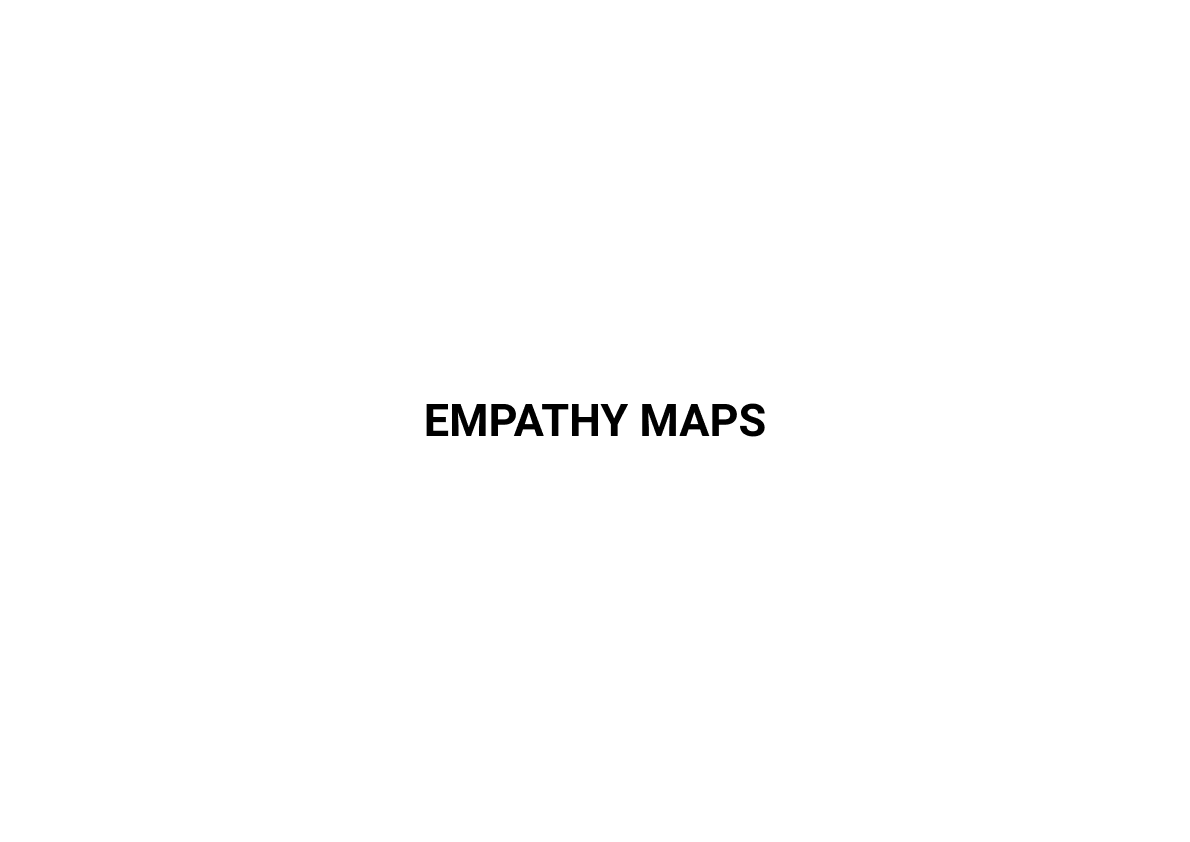

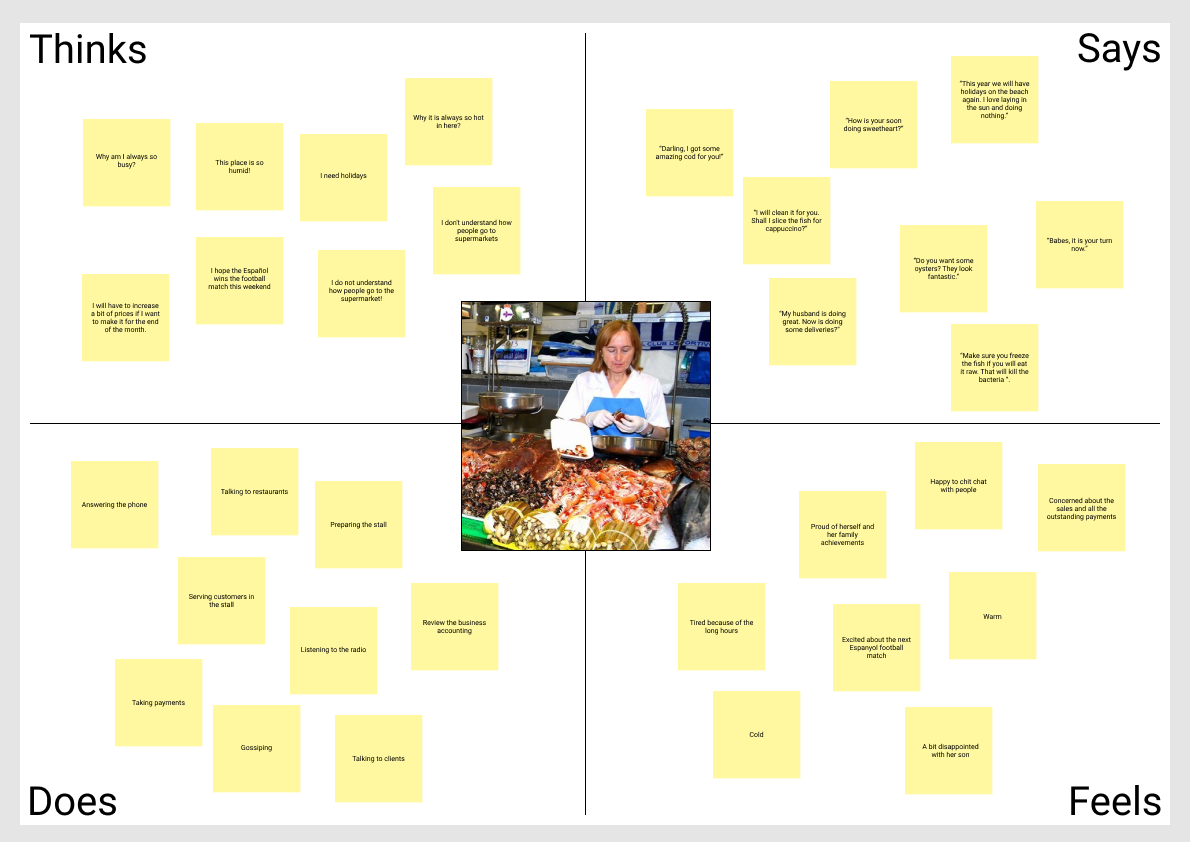
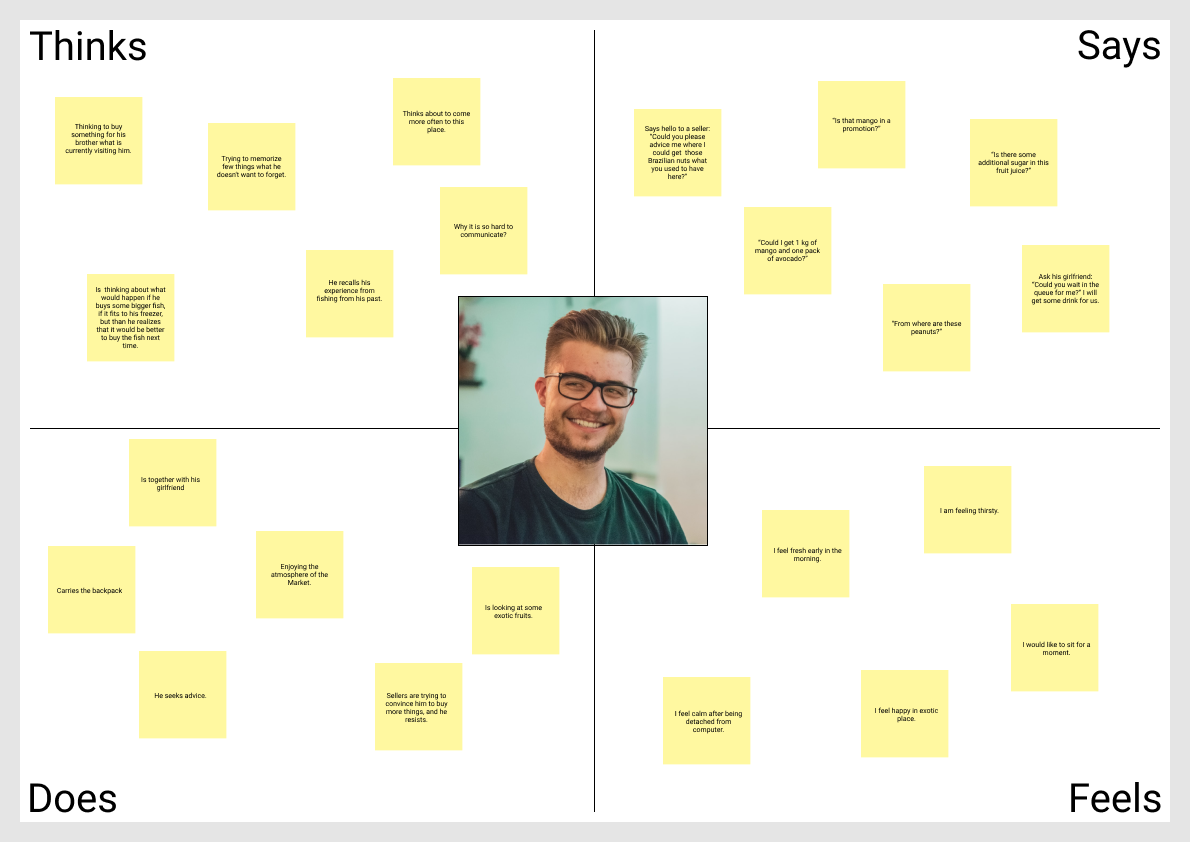
User Journey Maps
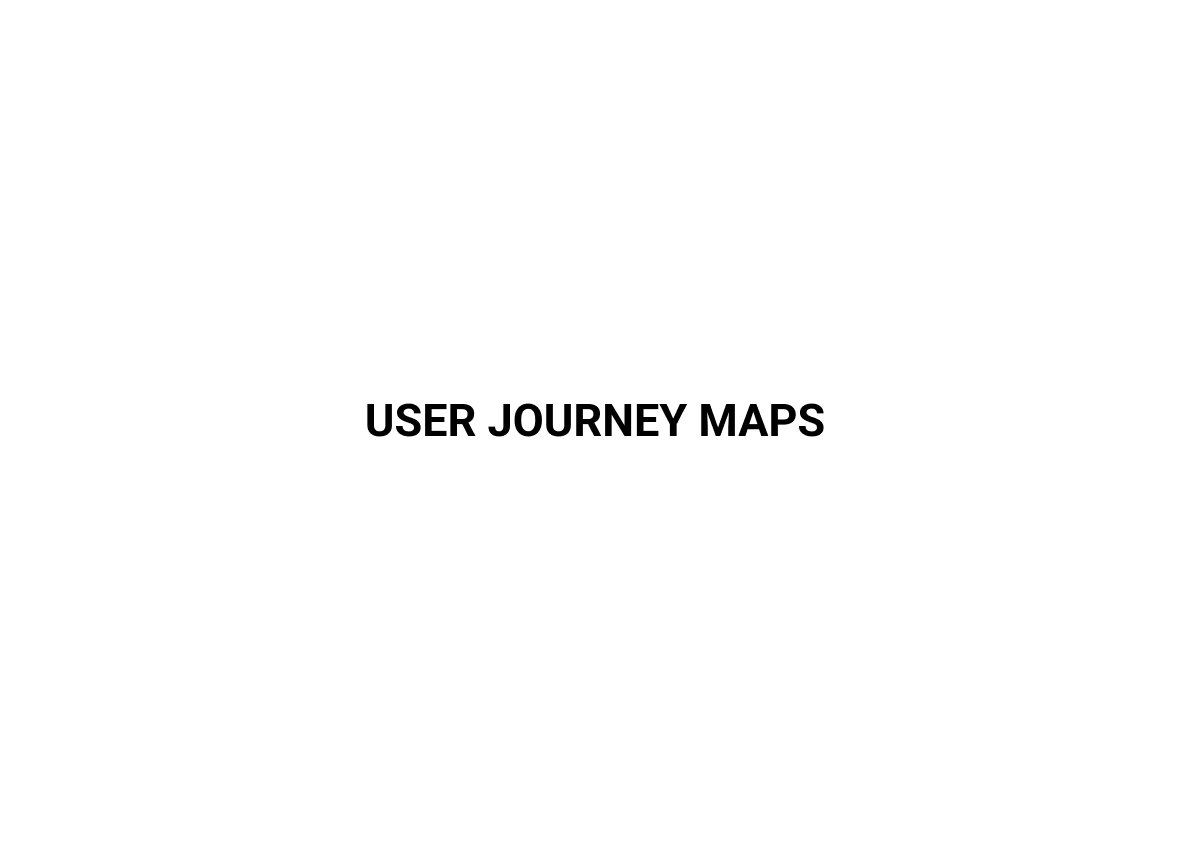
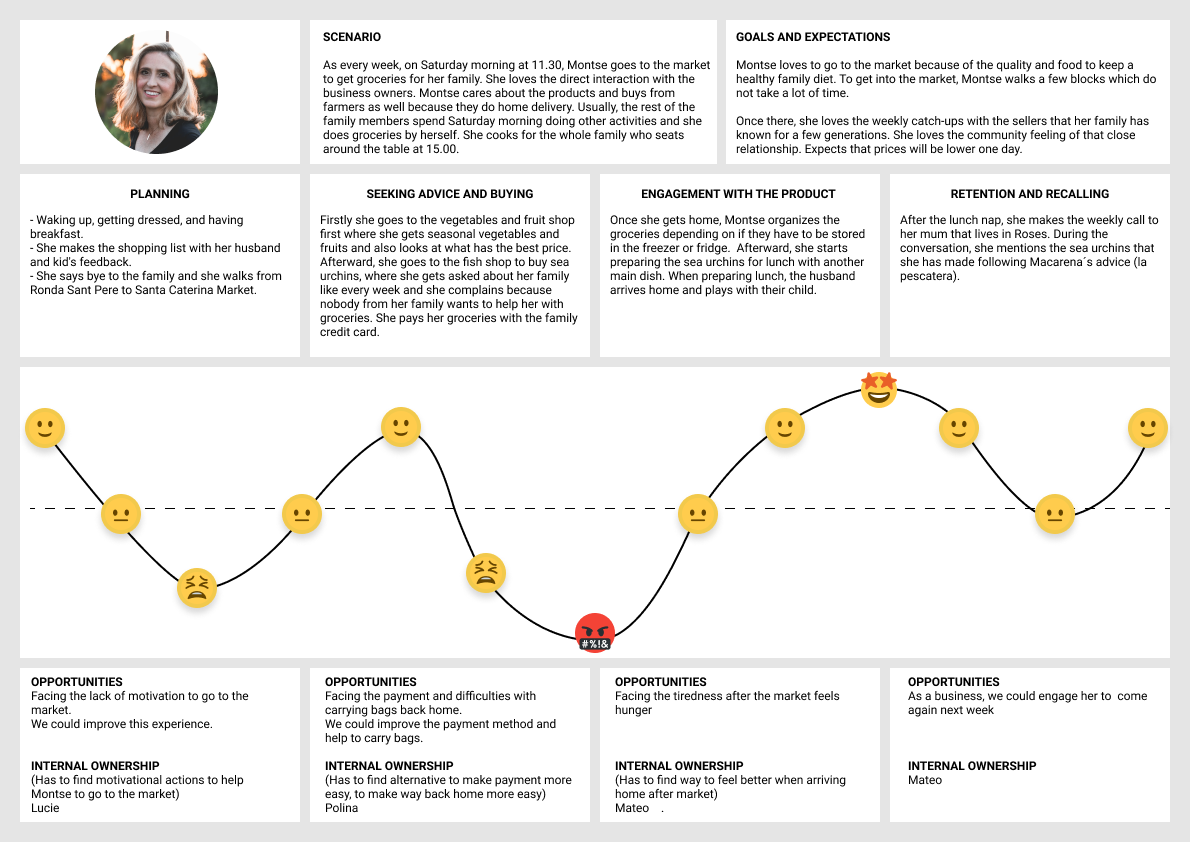

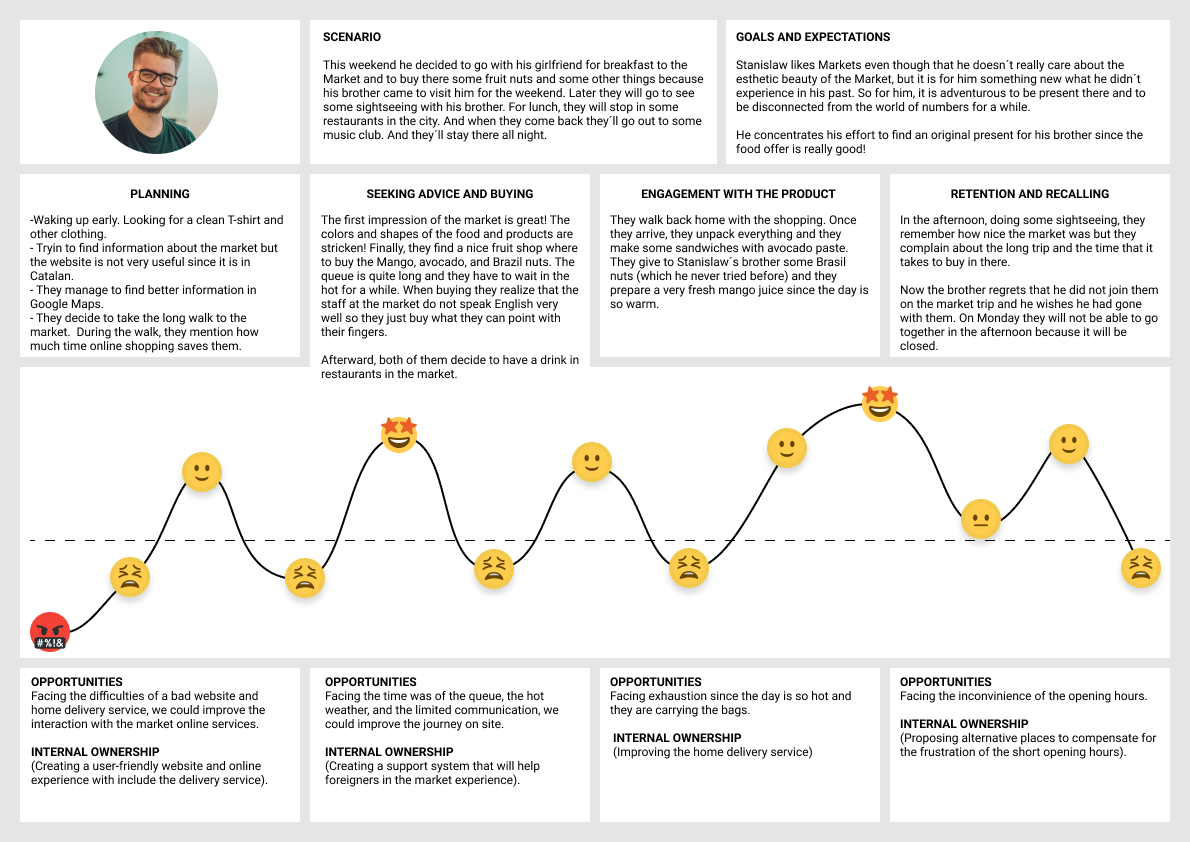
Service Blueprint

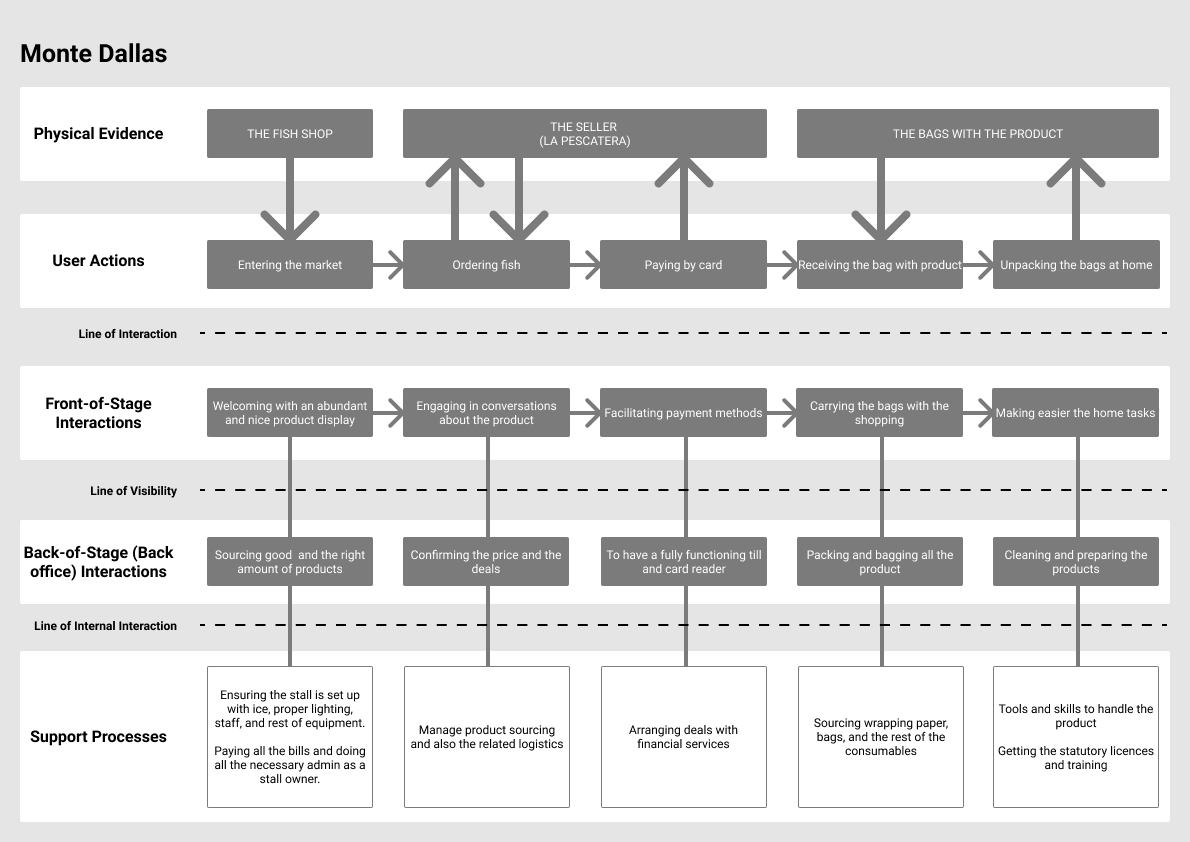
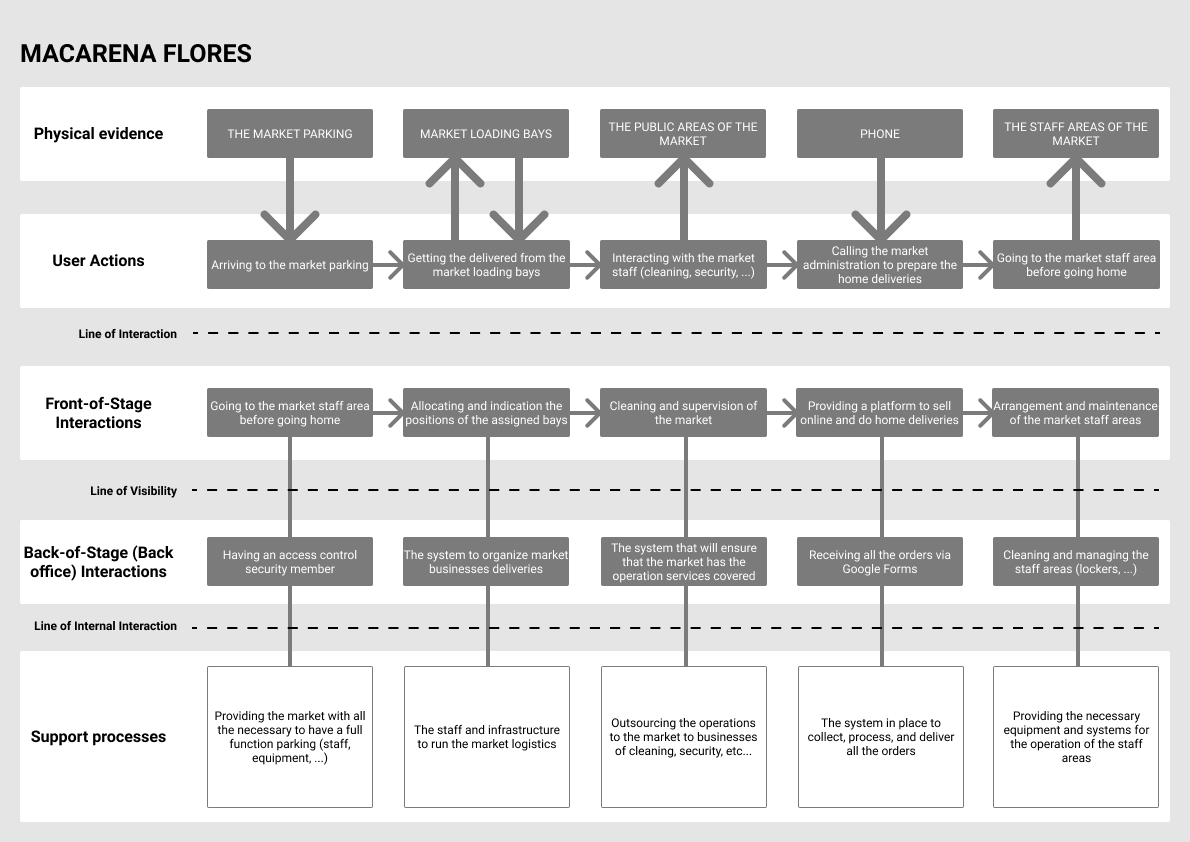

Ideation

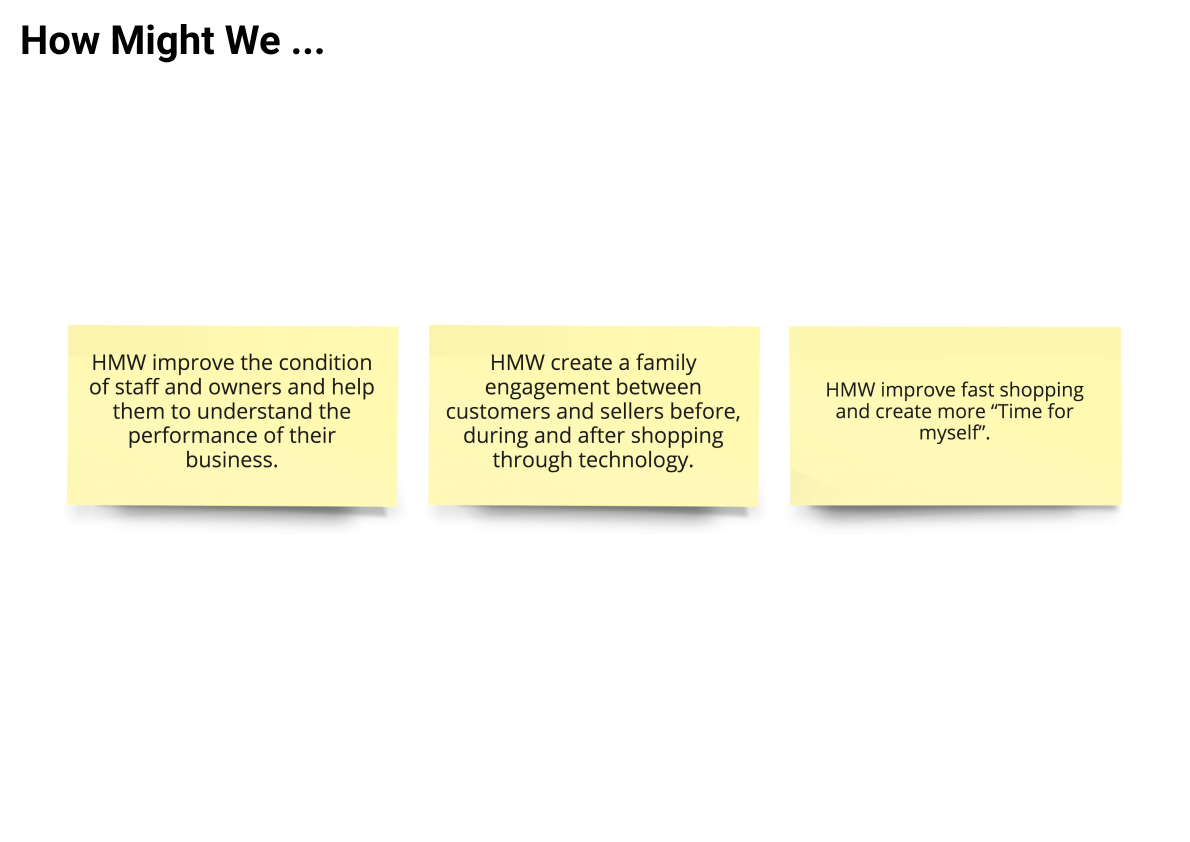


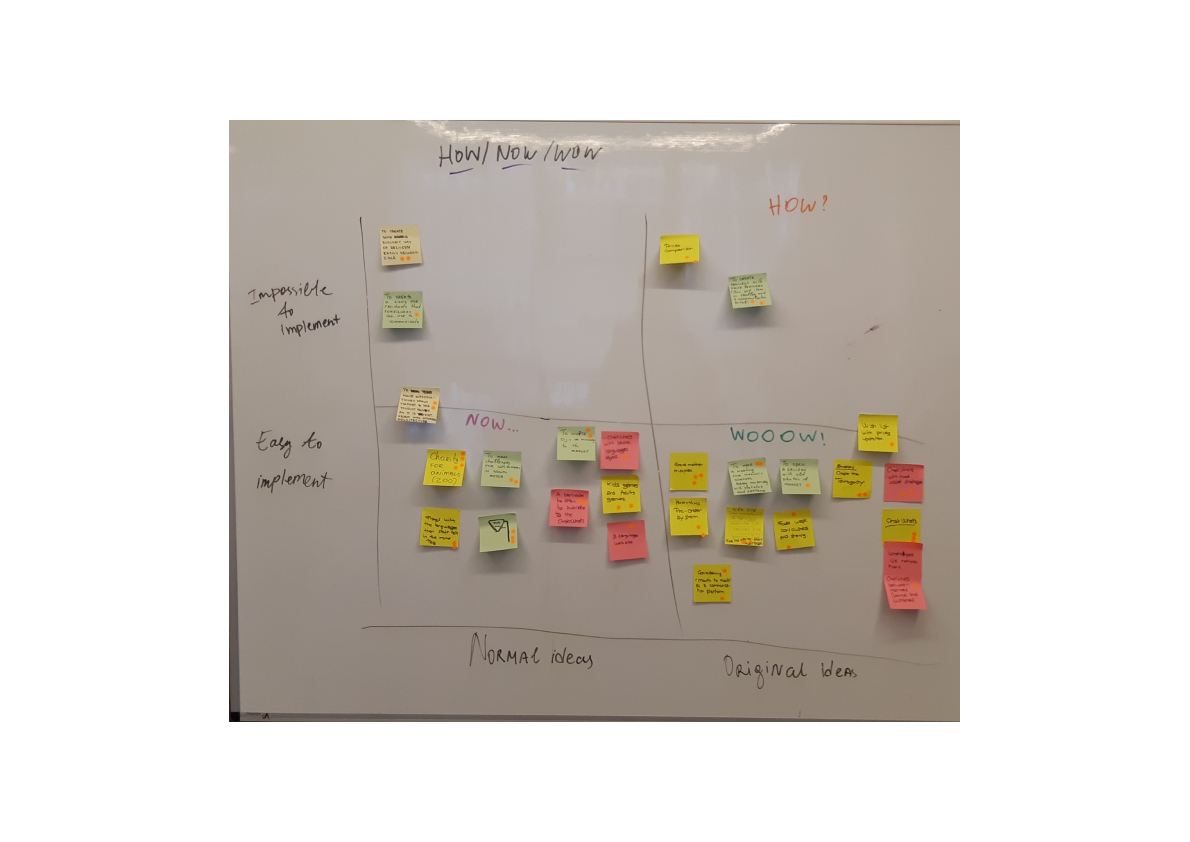
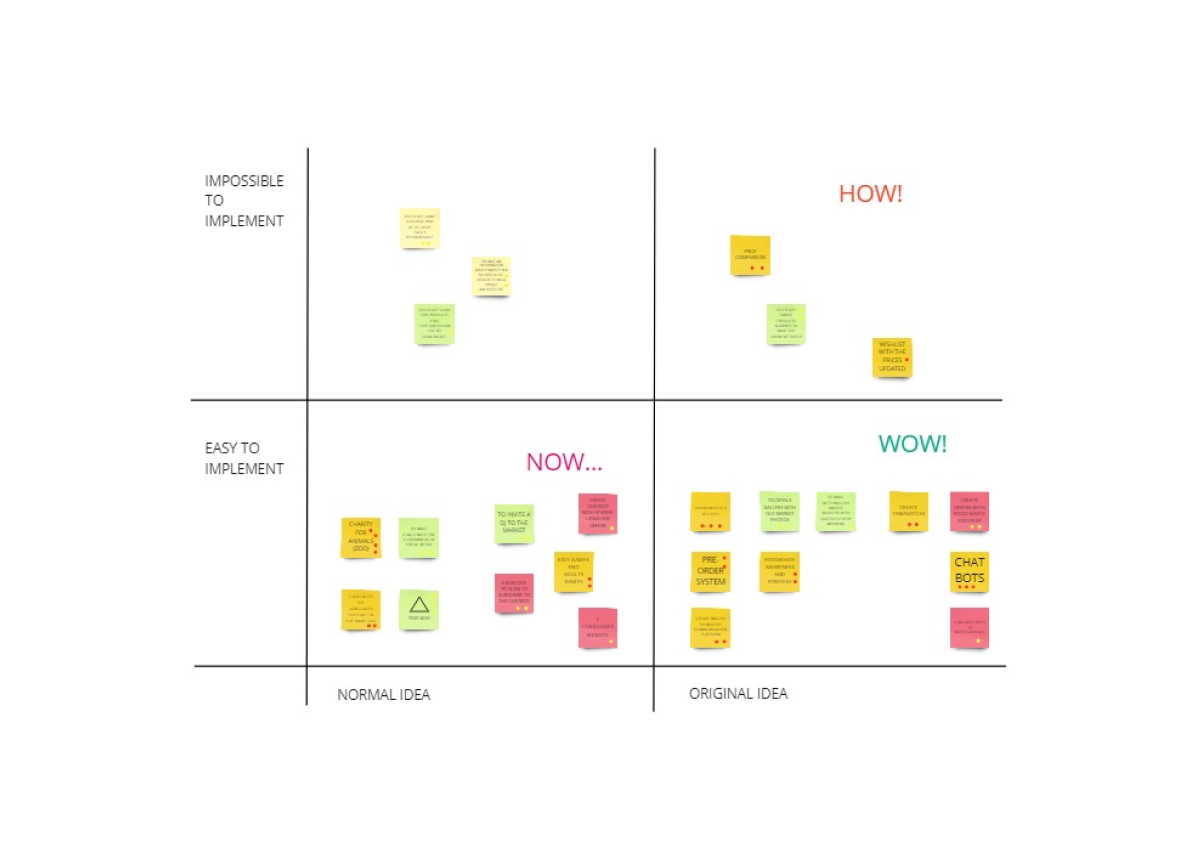
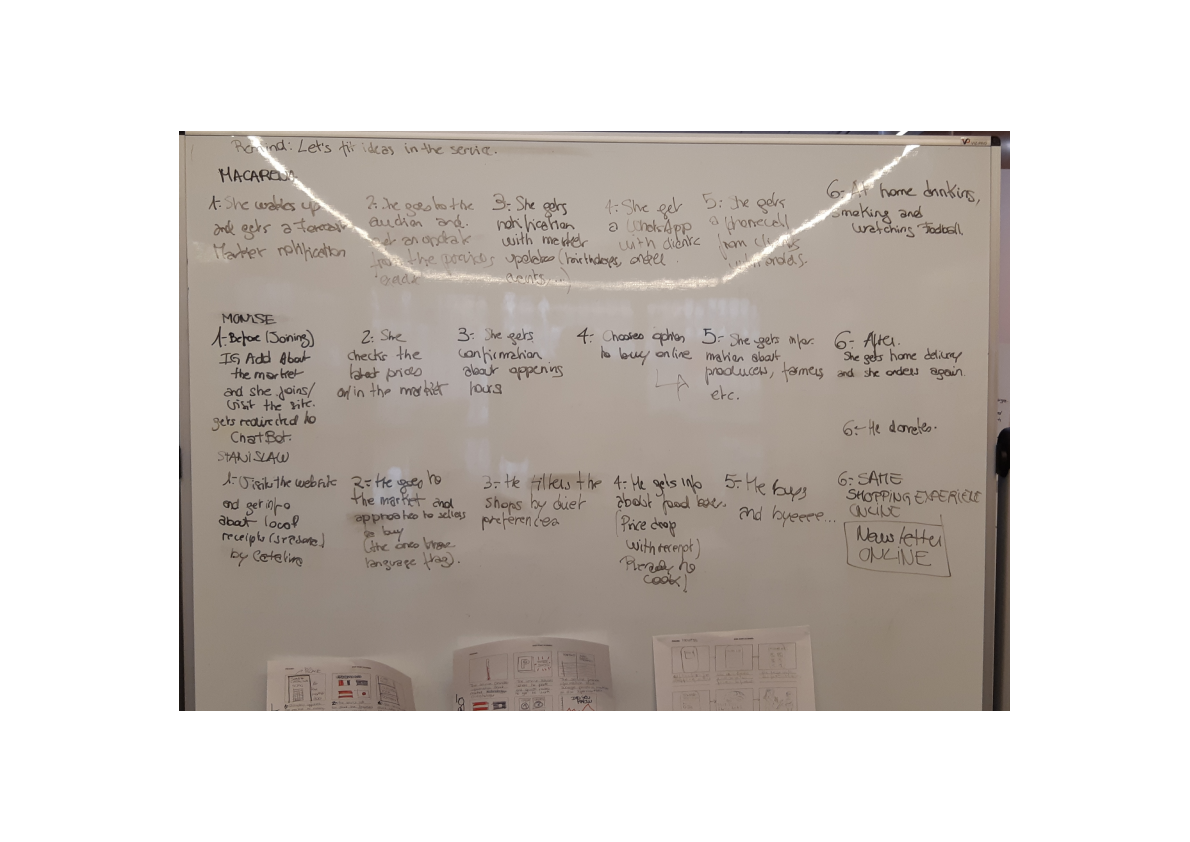
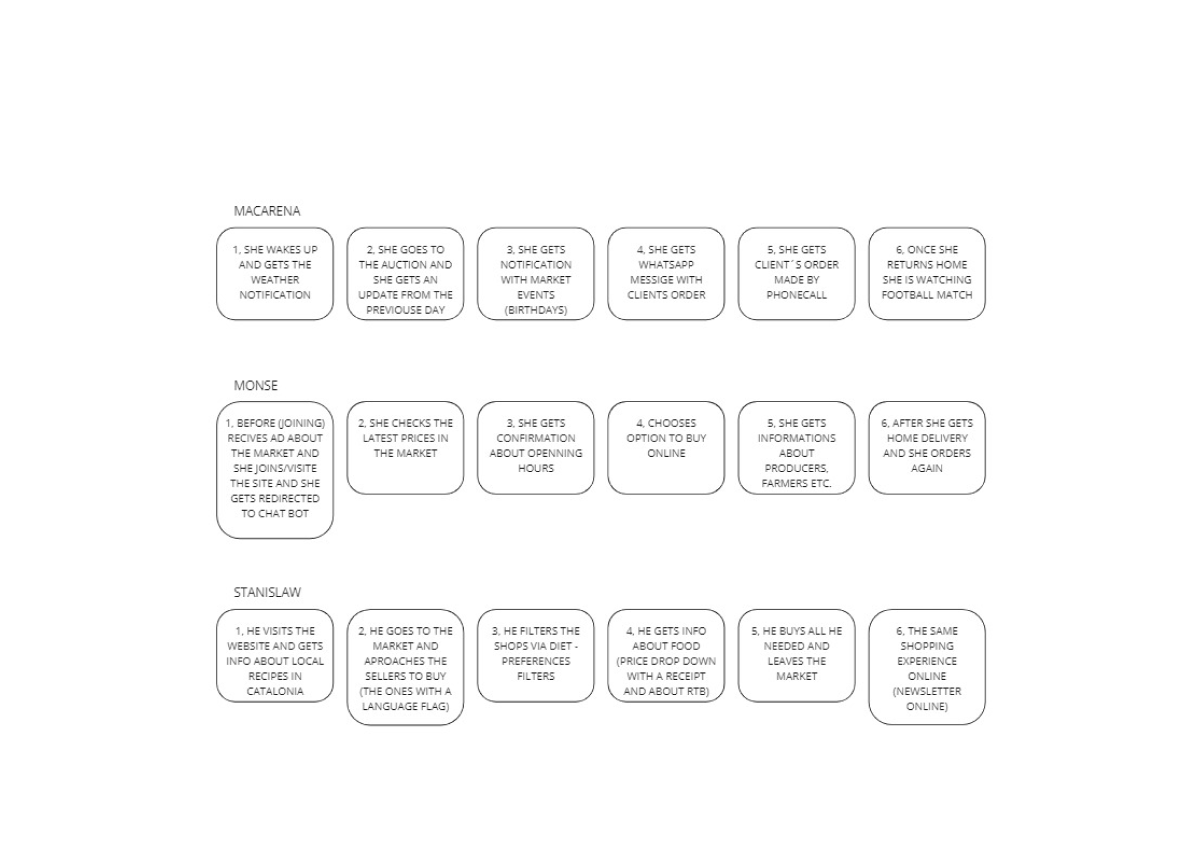
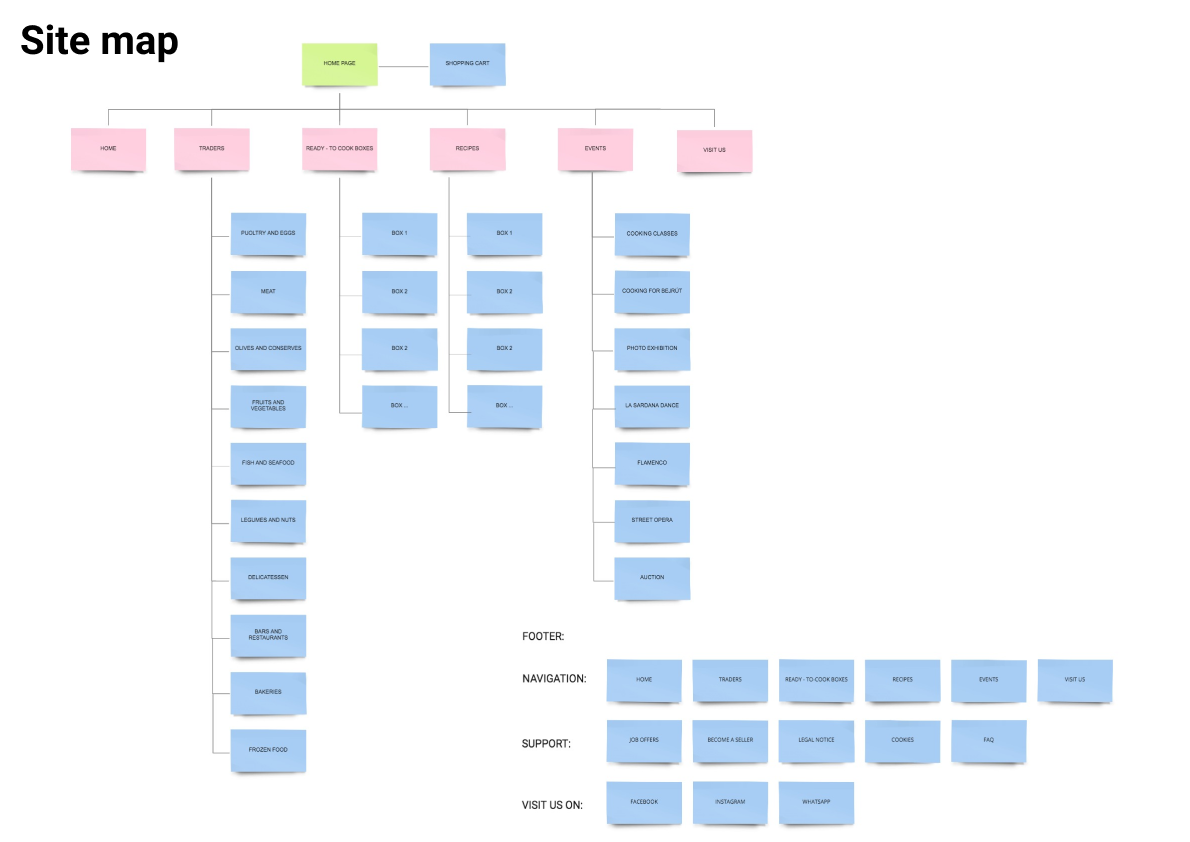
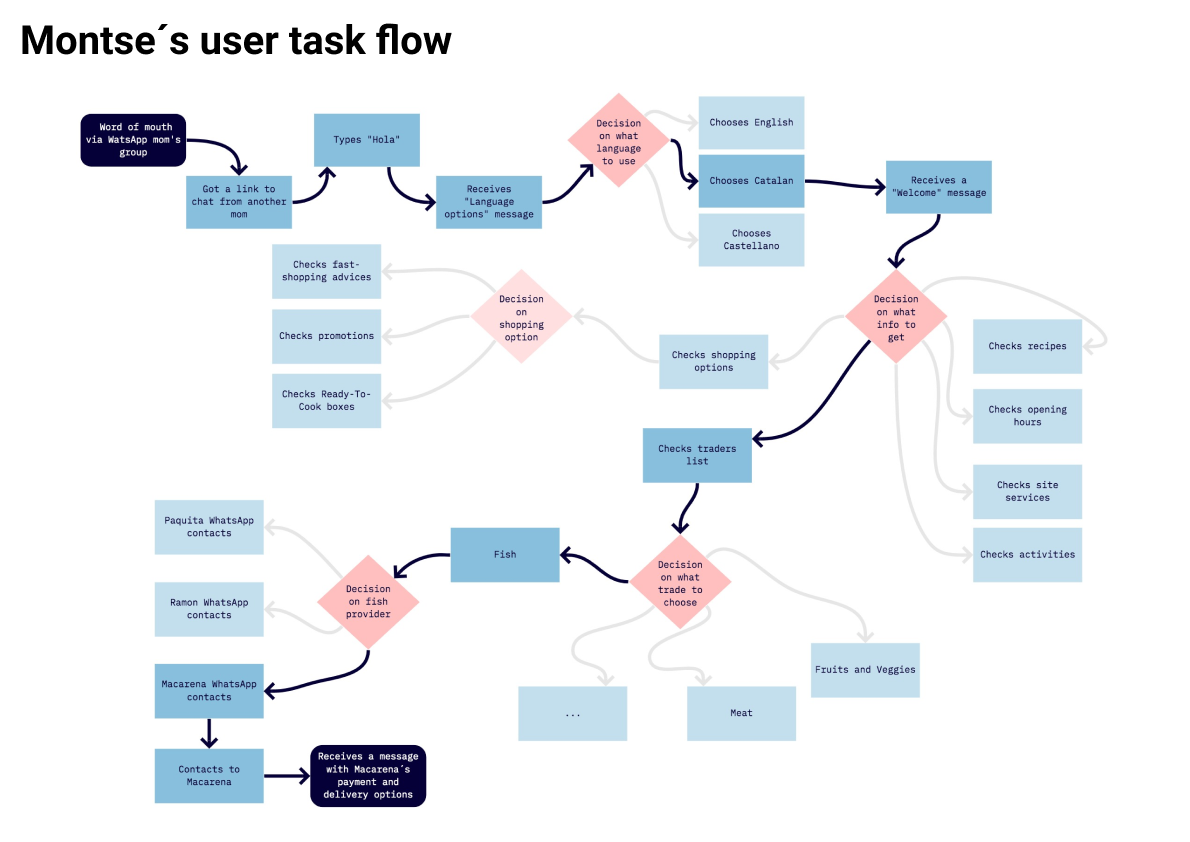
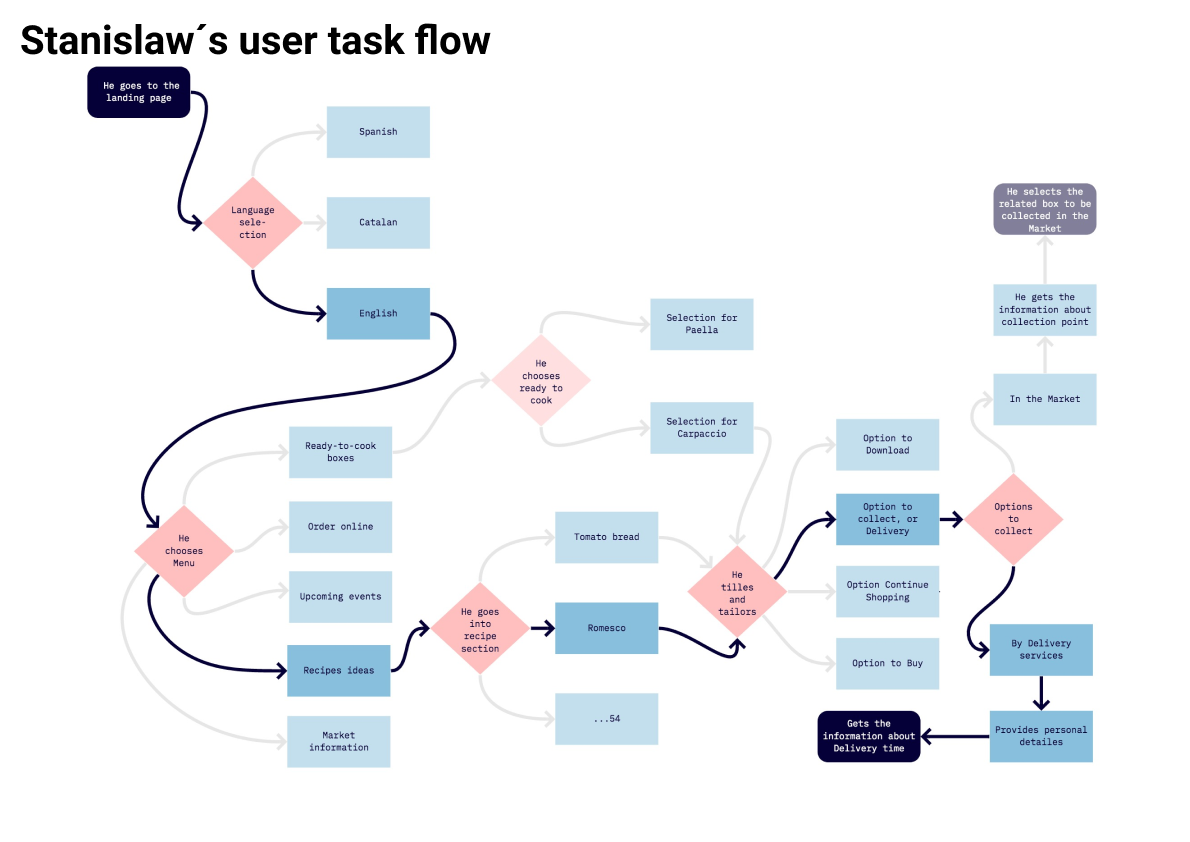
Research Sumary and Conclusions
Research goals
To solve our client’s problem, we identified that we had to interview his customers and shop owners to understand their needs. Therefore, we defined:
Goals related to the customers:
– What are the general habits when people are going to the market
– Understanding the general attitude toward buying in a market
– Understanding the general attitude about people buying food (habits)
– Understanding the general attitude toward buying online
Goals related to the shop owners:
– Understanding their relationship with the market
– Understanding the general attitude toward selling online
– Understanding the general attitude toward selling in a market
Quantit. & qualitat. research
We decided to concentrate on two types of researches: quantitative and qualitative.
For quantitative research, we created a survey in Google Forms aimed to study what kind of people is going to the market, the spending son food and in the market, their alternatives, their habits, and the demographics.
For qualitative research, we created 4 protopersonas to define the people to question. We interviewed the market’s customers: 82 years old Marina-Elena, 47 years old Beatriz, 42 years old Pablo, 30 years old Tove, 25 years old Egor. We also interviewed a shop owner: 47 years old fish shop owner.
With quantitative research, we found that people like to buy good quality and local products. The main reason for people not to go to the market is the inconvenient opening hours. Apart from the market, people prefer to go to supermarkets and local food stores. Some foreigners have language difficulties and don’t go to the market.
In general, people spend on grocery shopping for less than one hour.
USER PERSONAS
Based on the surveys and the interviews we created the following personas that represent our user types:
– Montse Dalmau, a 42 years old local that goes to the market every Saturday,
– Macarena Flores, a 47 years old Macarena who owns a fish shop in El Mercat de Santa Caterina.
– Stanislav Nowak, a 32 years old foreigner from Poland that is living in Barcelona for 8 years and sometimes goes to the market.
– We did not include Carmina, 82 years old local retired lady, because we assumed that is harder to change old people´s habits. During the interviews, it got confirmed that they don’t use digital technology to access to market the market.
EMPATHY MAPS.
The empathy maps helped us to get a deeper inside into our users. There is a mix of emotions towards the market experience. Our task has to focus on one side on easing the negative emotions motivated by the waiting in the queue or the language barrier. On the other side has to embrace the positive feelings that the current market experience provides like the close relationship between the sellers and the visitors.
JOURNEY MAP
Journey maps helped us identify the best and worst moments before, during, and after interaction with the market. The worst moments of the journey give us a foundation to improve the user’s experience. Users can feel a lack of motivation going to the market because of the journey distance, the restricted opening hours, the complicated process of paying, or the standing in the queue.
SERVICE BLUEPRINT.
The service blueprint helped us to understand the complex infrastructure and systems behind a business like a market. There are plenty of opportunities that can improve the visitor’s, seller’s, and staff experience before, during, and after interacting with the market and its shops.
Main takeaways
– Supermarkets are the main competitor of markets.
– El Mercat de la boquería is the main competitor of el Mercat de Santa Caterina.
– There is a lot of room for improvement at the El Mercat de Santa Caterina´s Website.
– The opening hours are the biggest inconvenience that prevents people to go to the market.
– There is strong support towards markets and people feel that they are important.
– Saturday is the busiest day since it is when most of the people have time off and before lunchtime is the busiest time
– Markets with not fully open stalls have much fewer visitors.
– El Mercat de Santa Caterina has some functionality issues. The building is not properly enclosed and there are big cooling and heating leaks. Negative impact on sellers and visitor’s experience.
– There are communication difficulties between sellers and foreigners.
– Aside from tourists, residents, and restaurants, boats docked in Barcelona port are an important client of El Mercat de Santa Caterina.
– Phone calls and WhatsApp are the main communication platforms between sellers and customers.
Insides & addition. learnings
– In one case someone mentioned that they don’t like to carrying bags because they cannot use their phone. In another instance, someone mentioned that is not eating fruit because feels lazy to peel it.
– Some people dislike prepacked products because the quantity is fixed.
– Some people think that restaurants in the Market premises are a great idea.
– It is very inconvenient, for people, when in the online shopping platforms the products disappear from the favourites list. They think that the providers have to propose alternatives. Otherwise, the clients keep missing things since the favourites list becomes smaller.
Opportunities
– To propose an alternative solution that will fit according to the identified personas’ habits and expectations.
– To improve the website experience based on the research conclusions.
– To improve the online shopping experience.
– To propose a solution to engage with the sellers and visitors before, during, and after the visit to the market site or website.
– To propose alternative services related to the market experience which will help the engagement with clients and businesses.
– To provide the owners with the main conclusions of our research that has a direct relation with the business (strategy, operations, architecture, …)
Next steps
The research has provided significant quantitative and qualitative data about the market visitors and clients but, since we did just one interview with a seller, we do not have enough information about the market staff. Therefore, as research´s next steps, would have to do further interviews and specific surveys to the staff. This would help us to understand the experience of these users and to contrast our assumptions (currently based on that unique interview).
This lack of information was also evident during the development of the Service Blueprint for Macarena. There are a lot of grey areas regarding the market back services, processes and organization.
Because all the above, we have decided to concentrate on the development of solutions centred in the customers and visitors.


